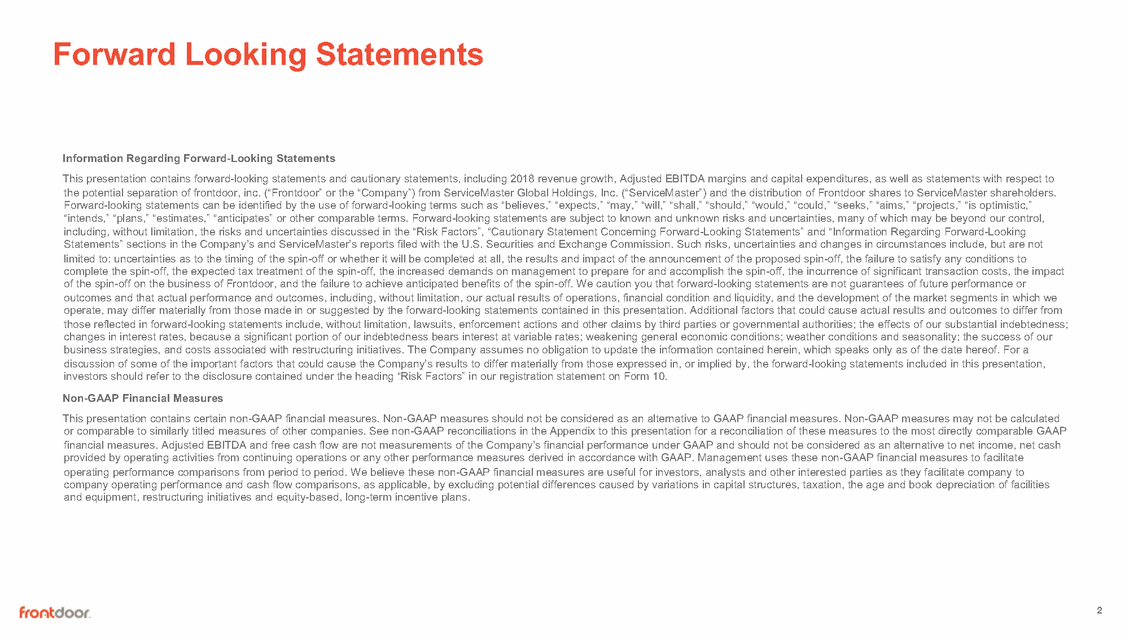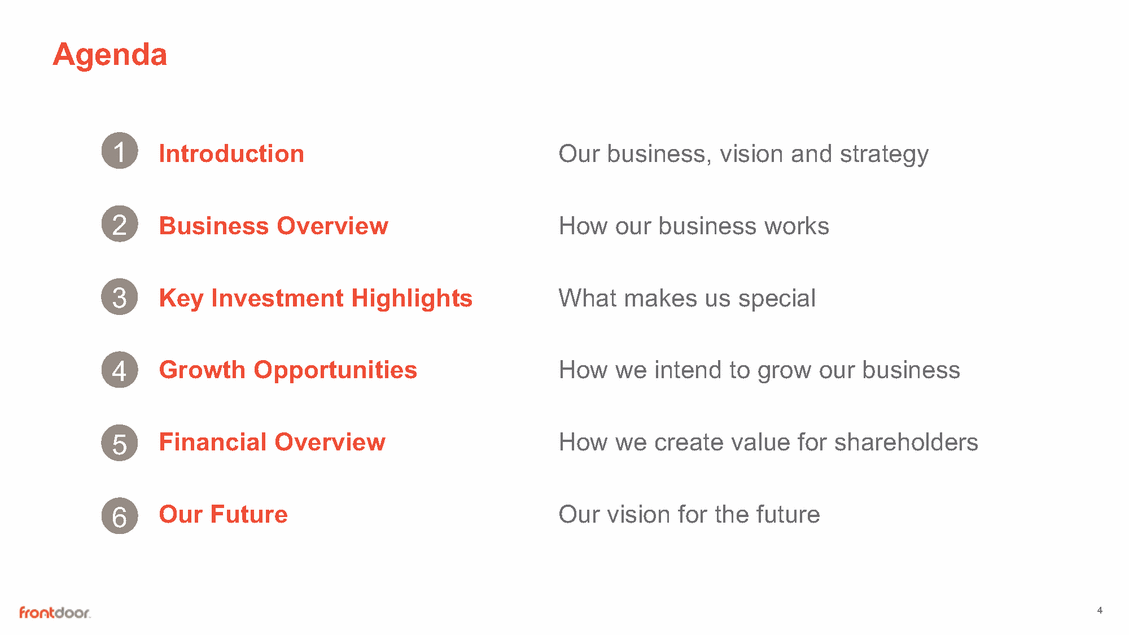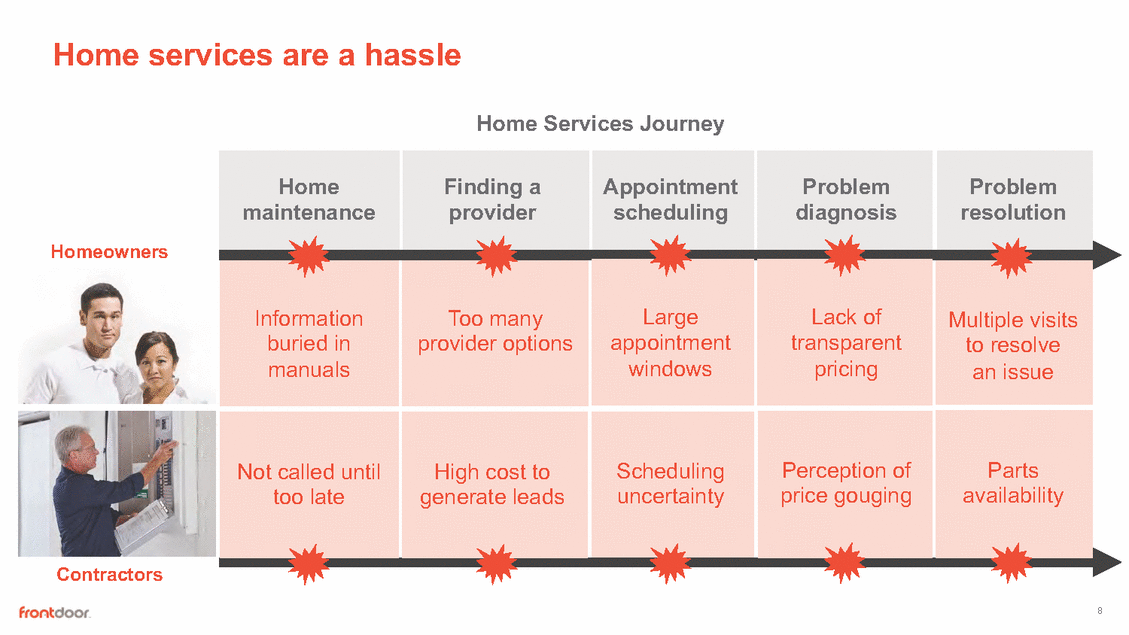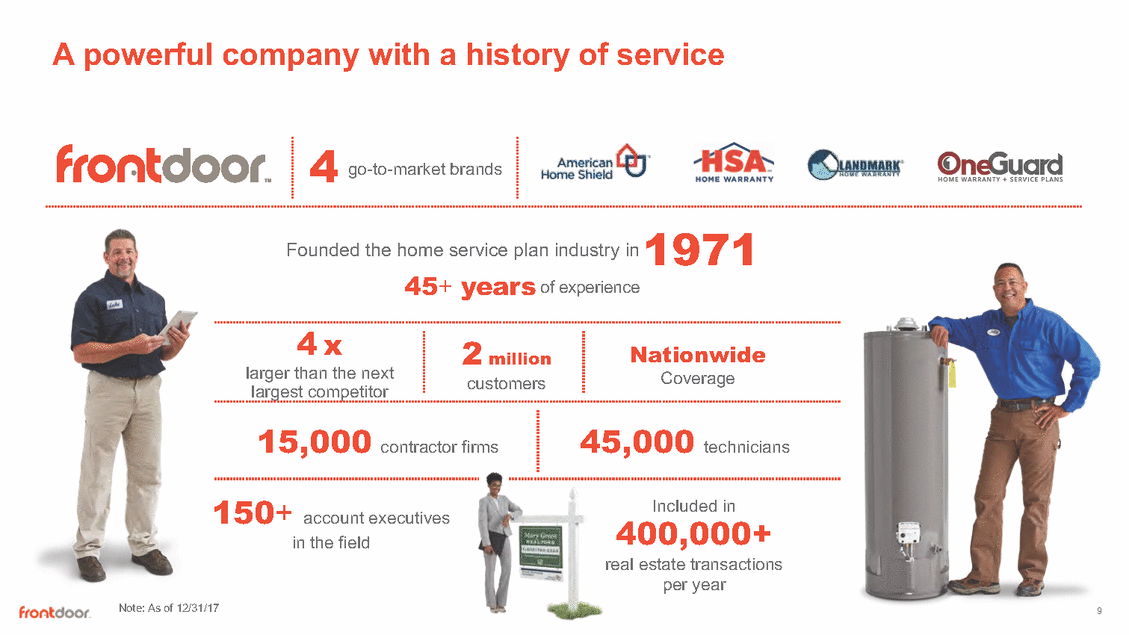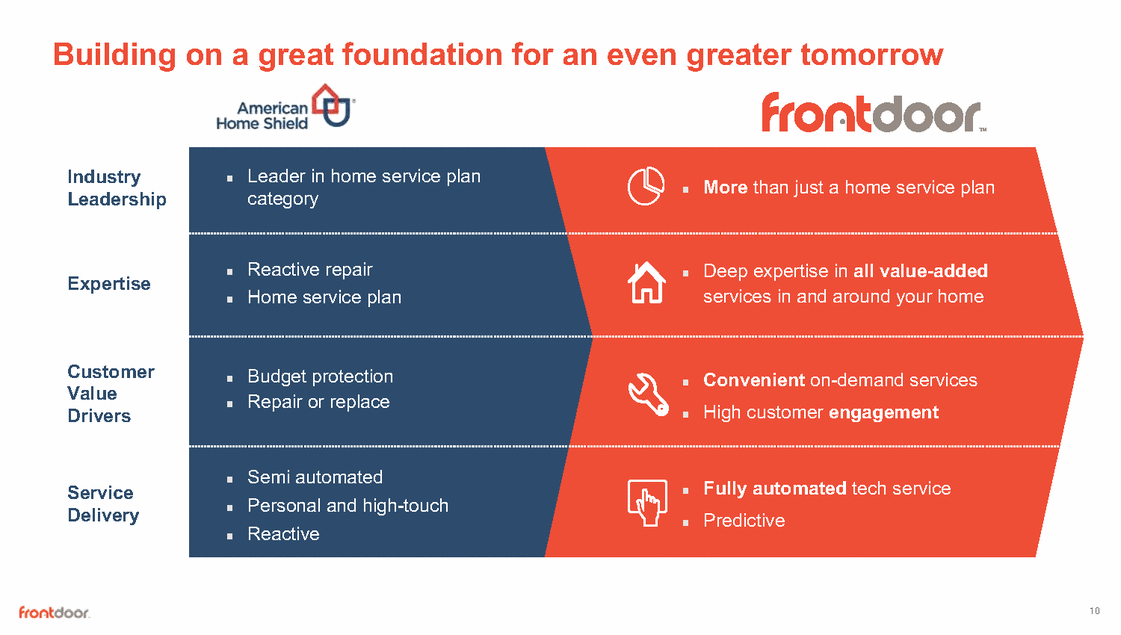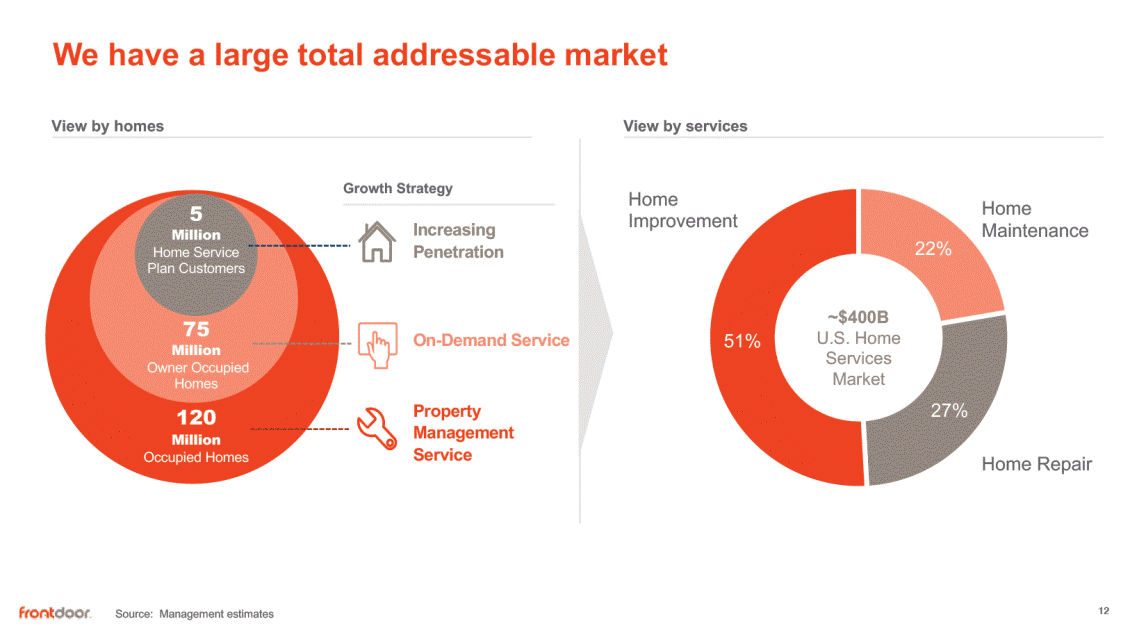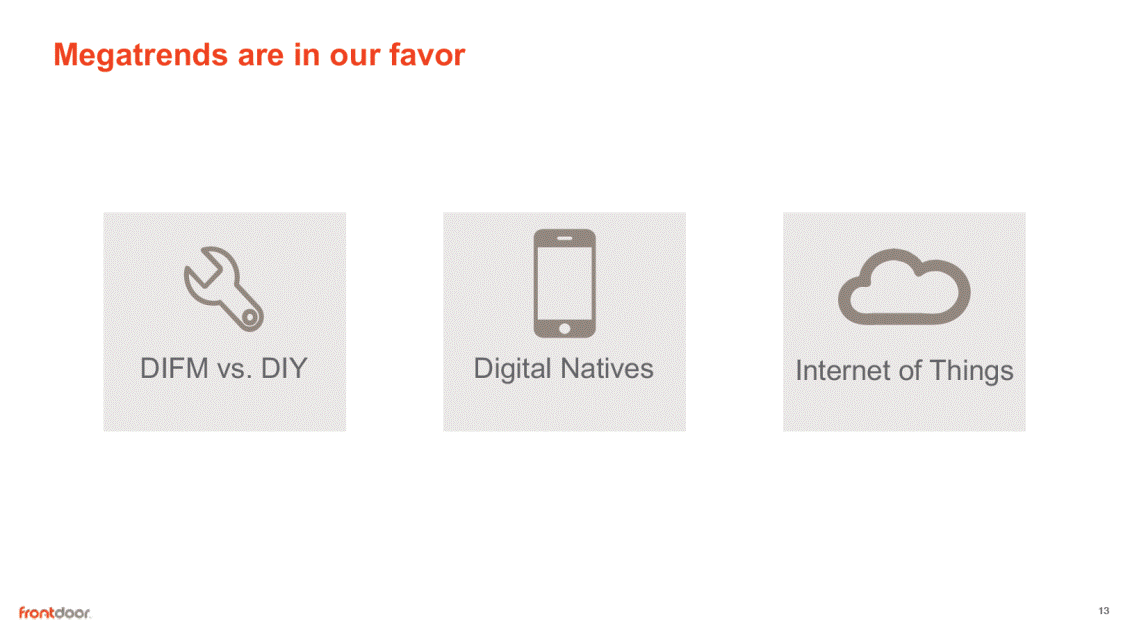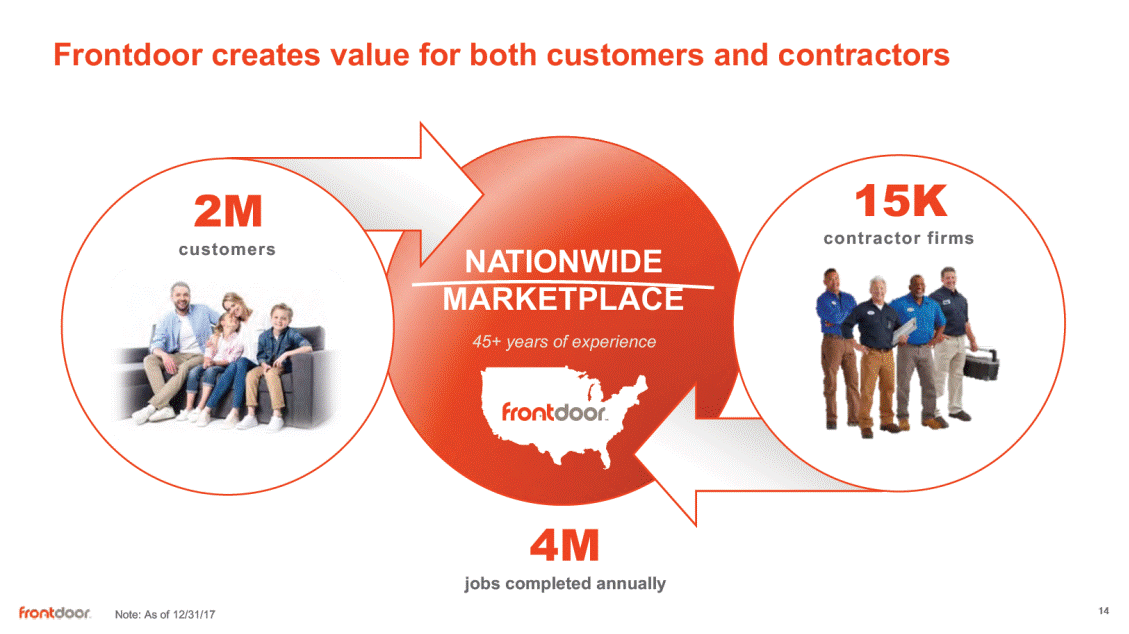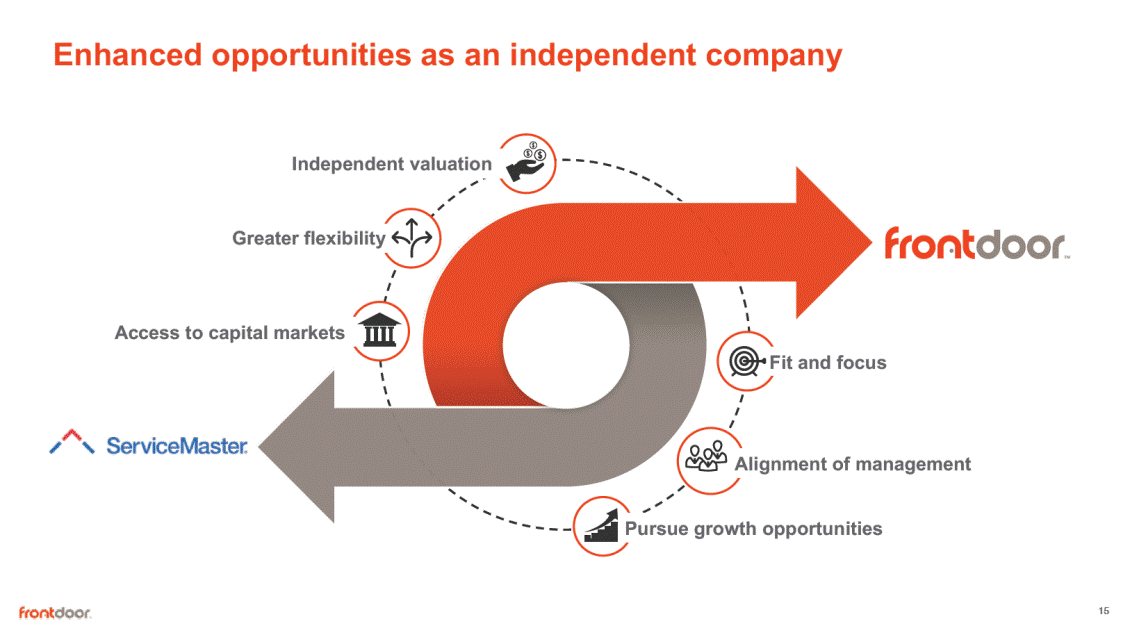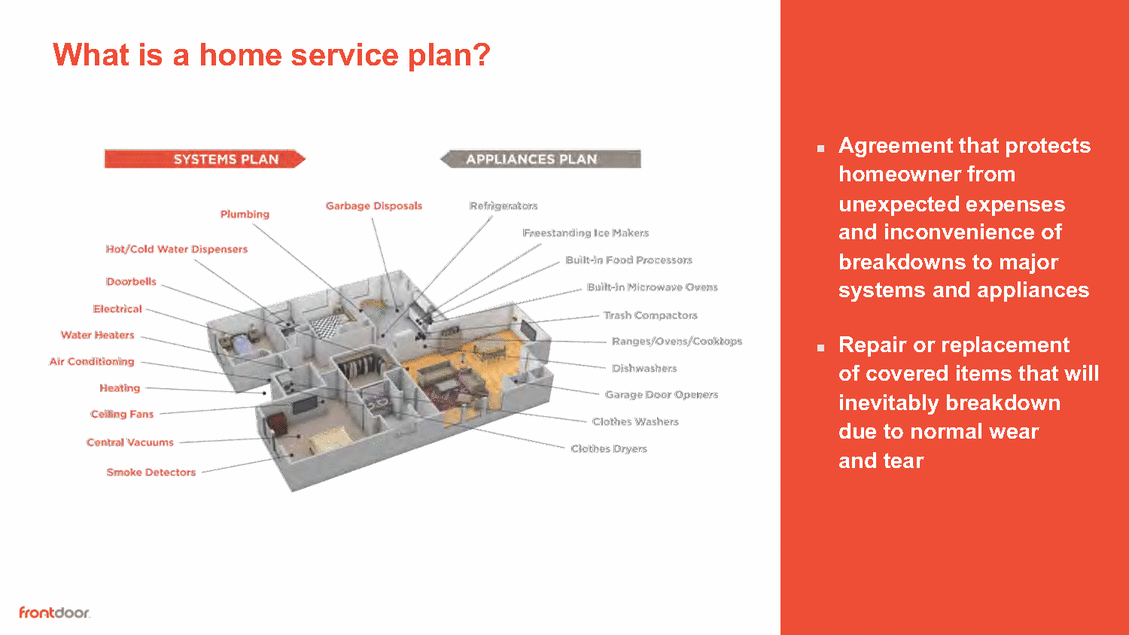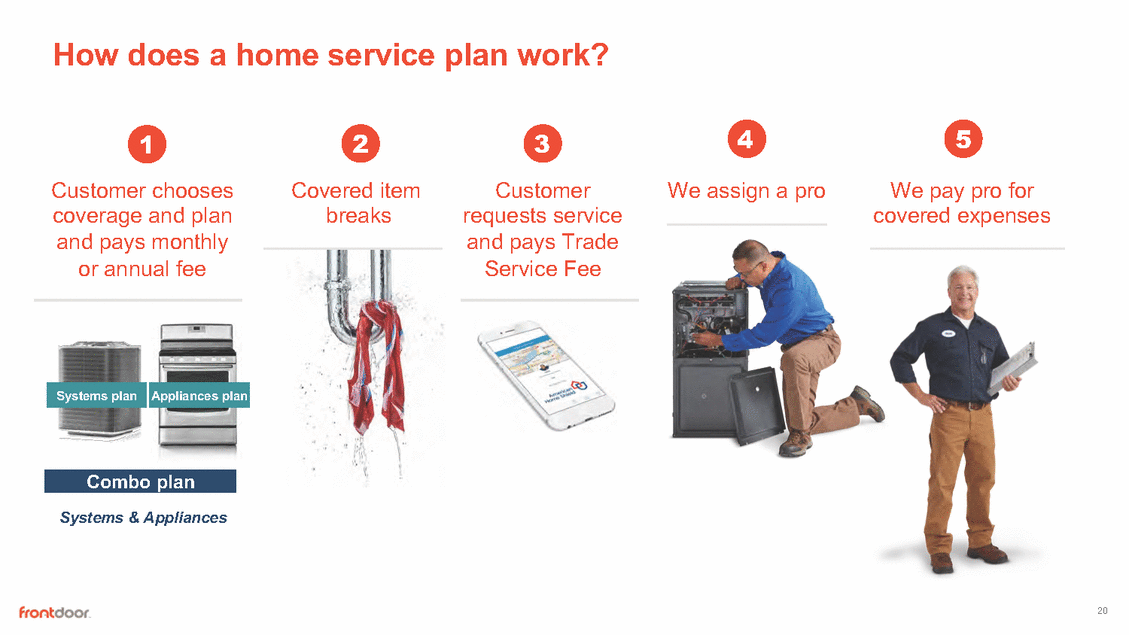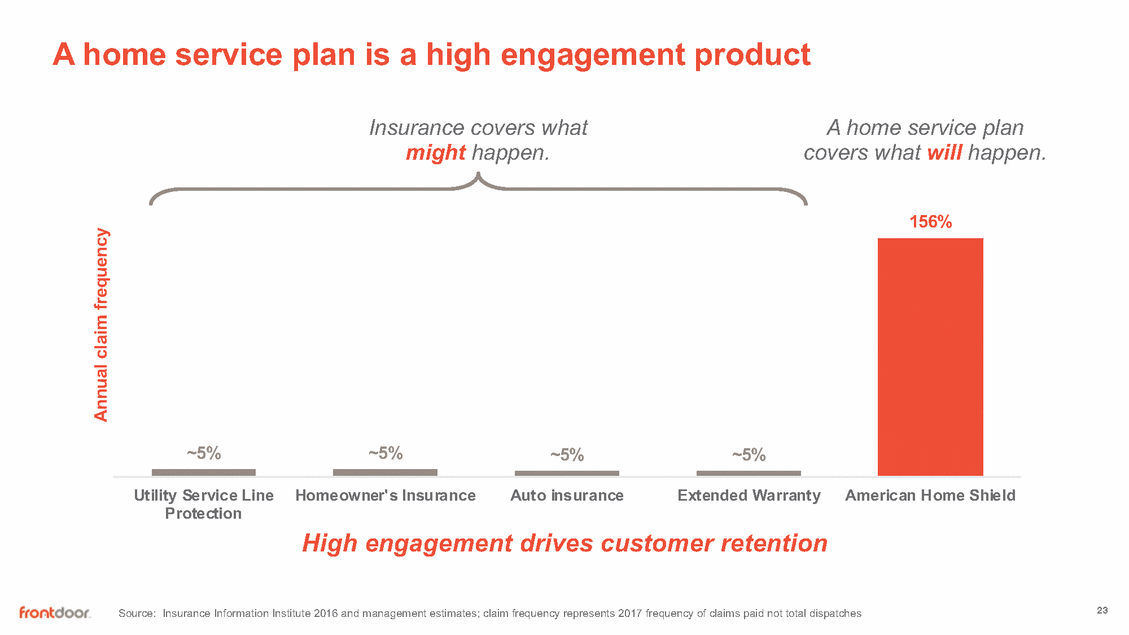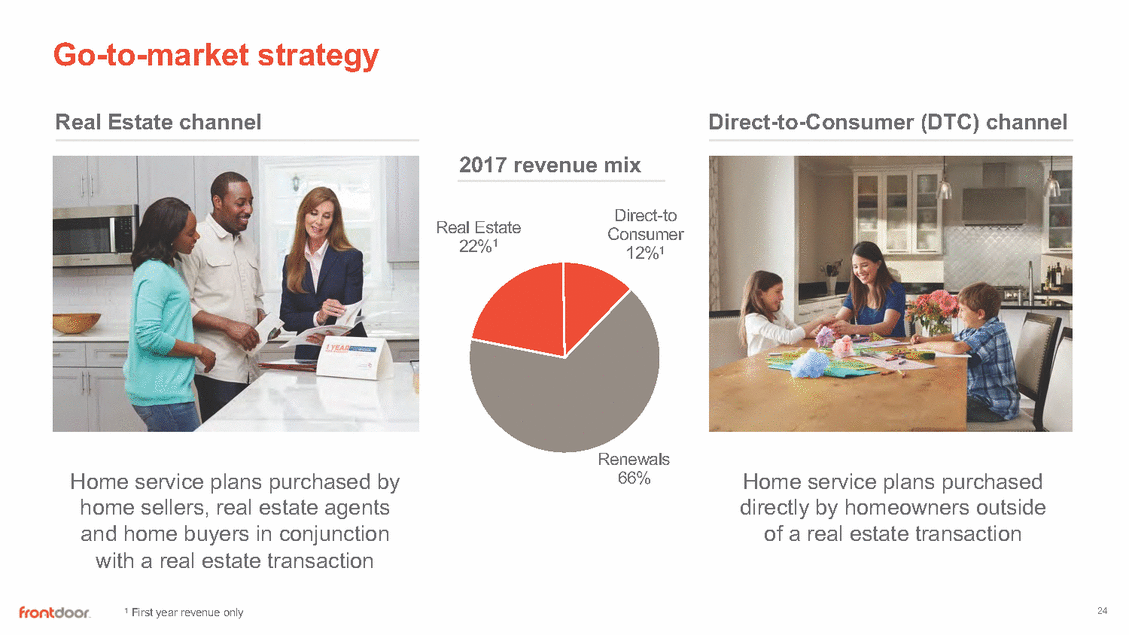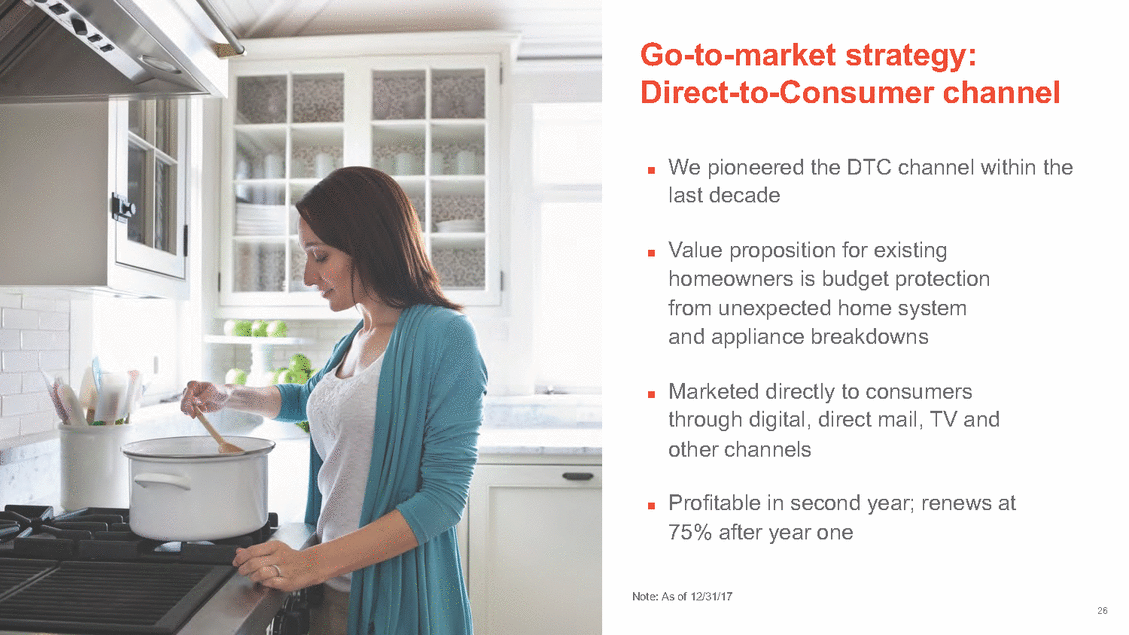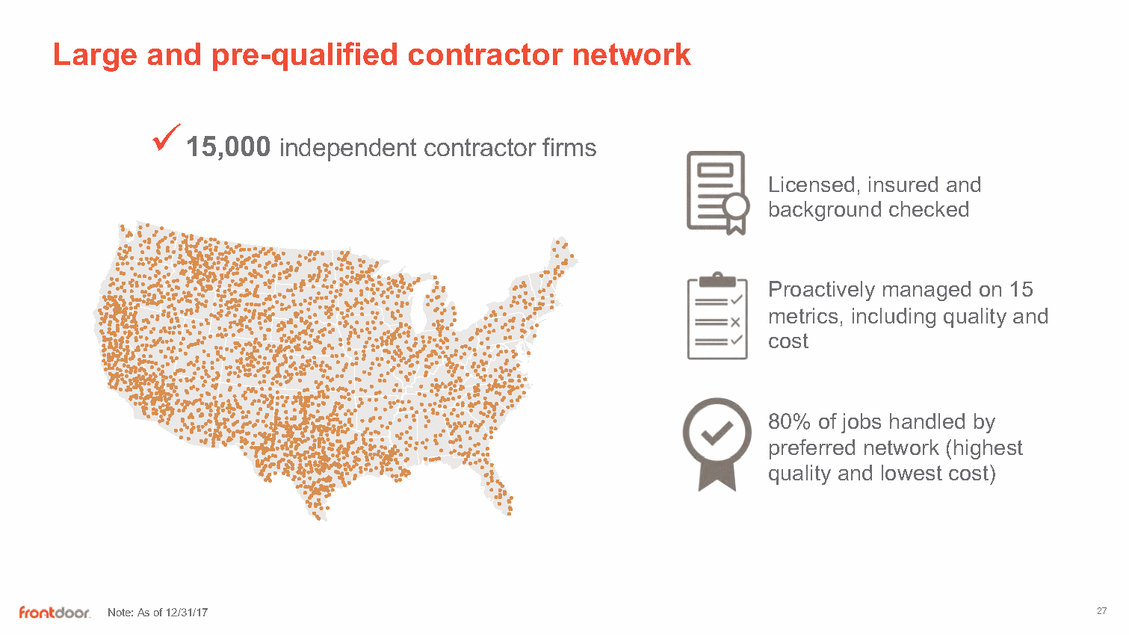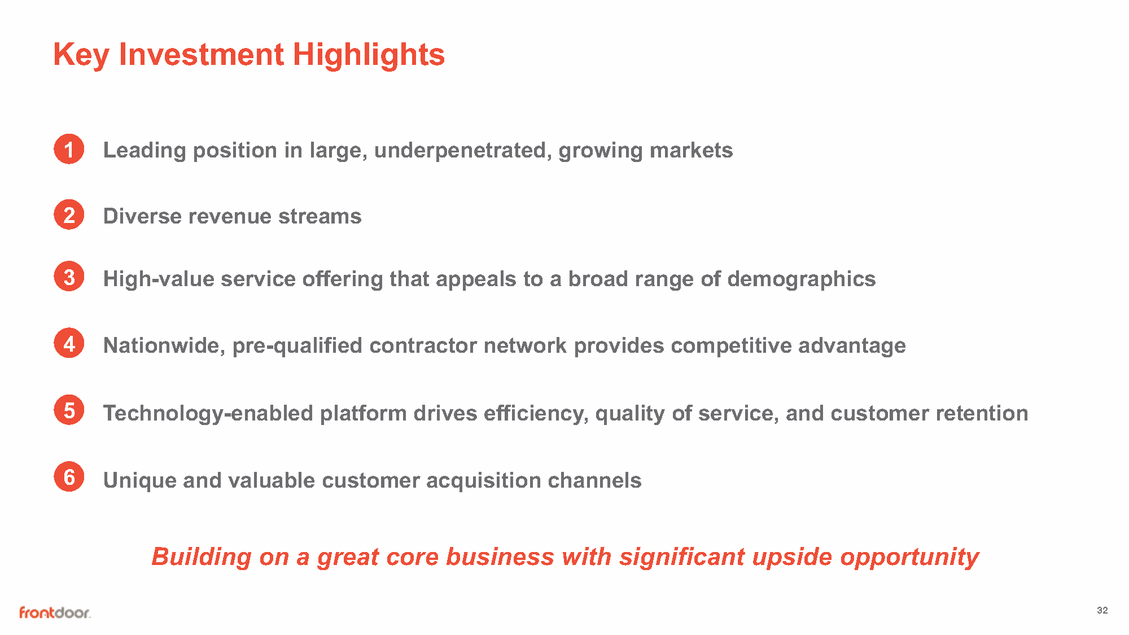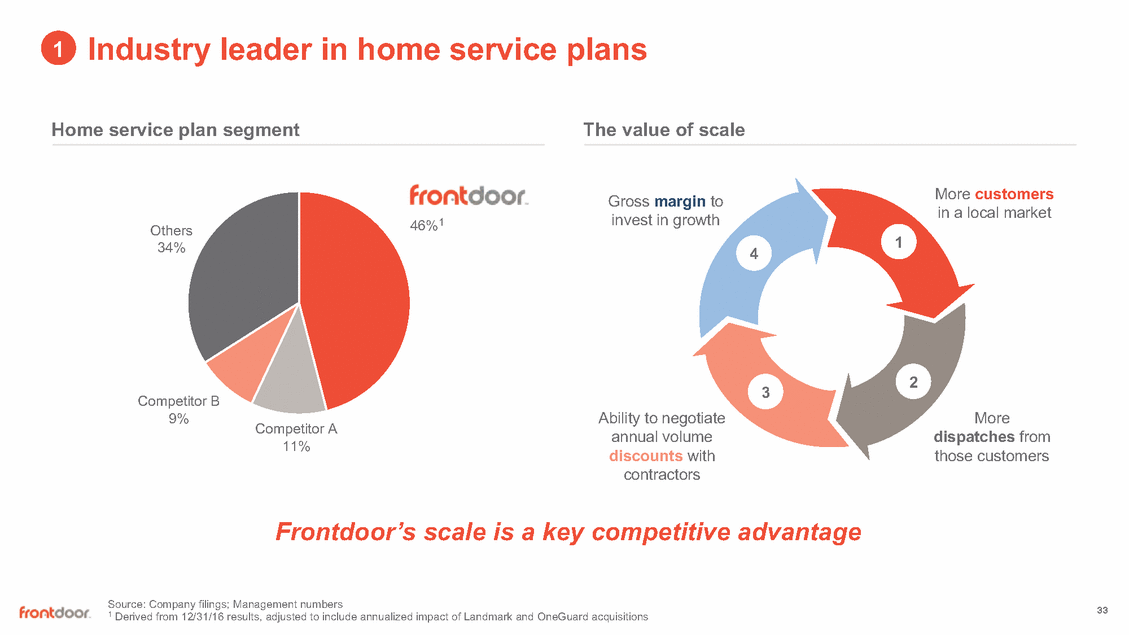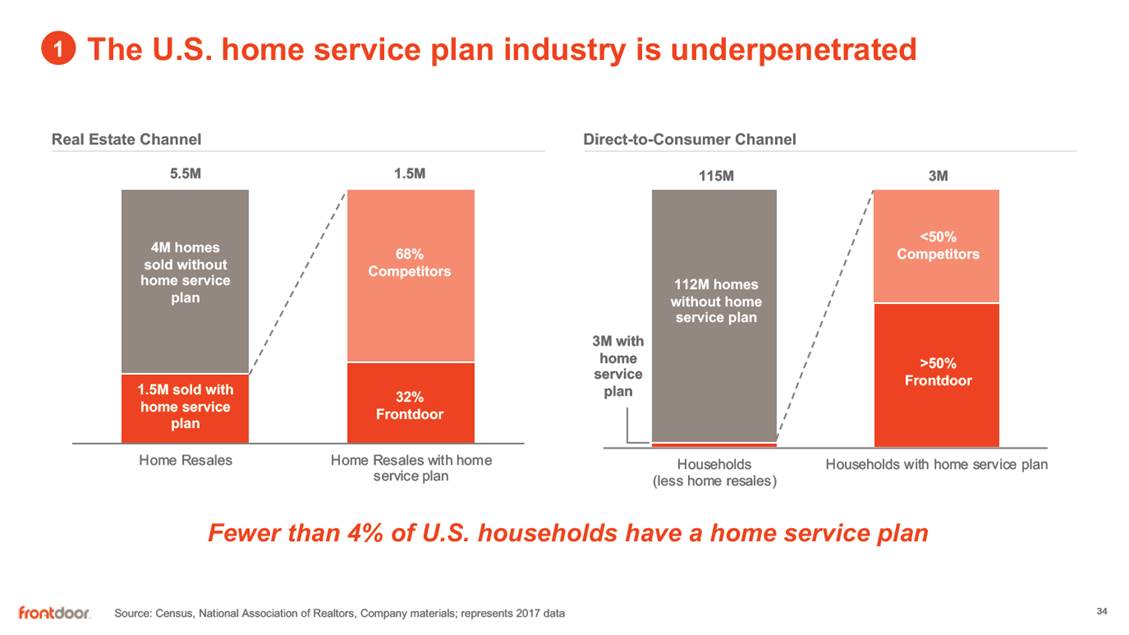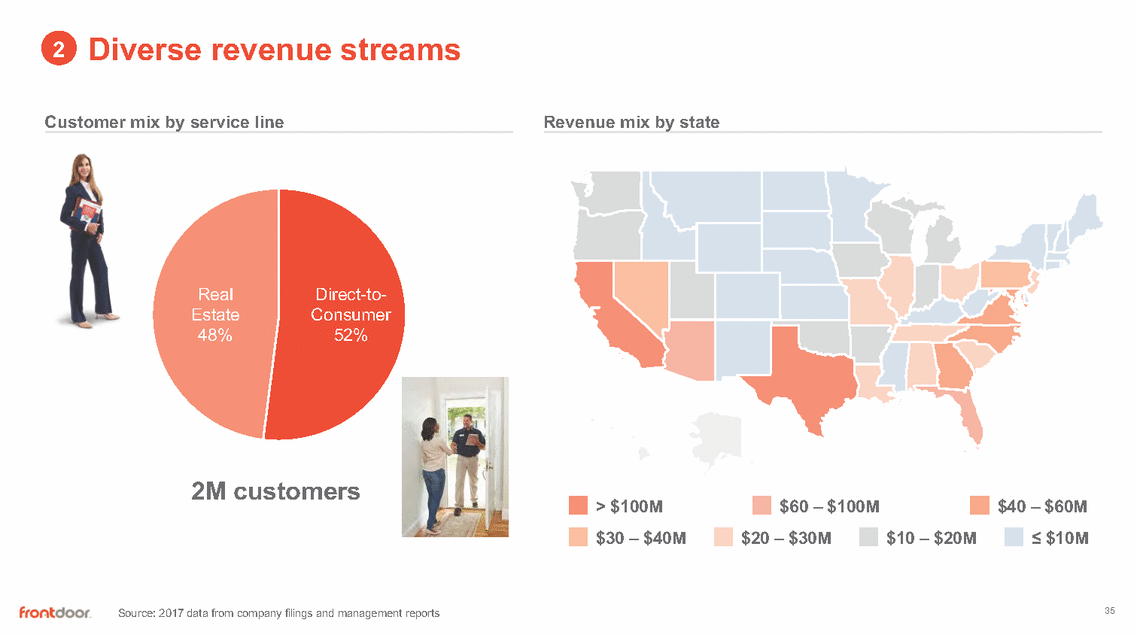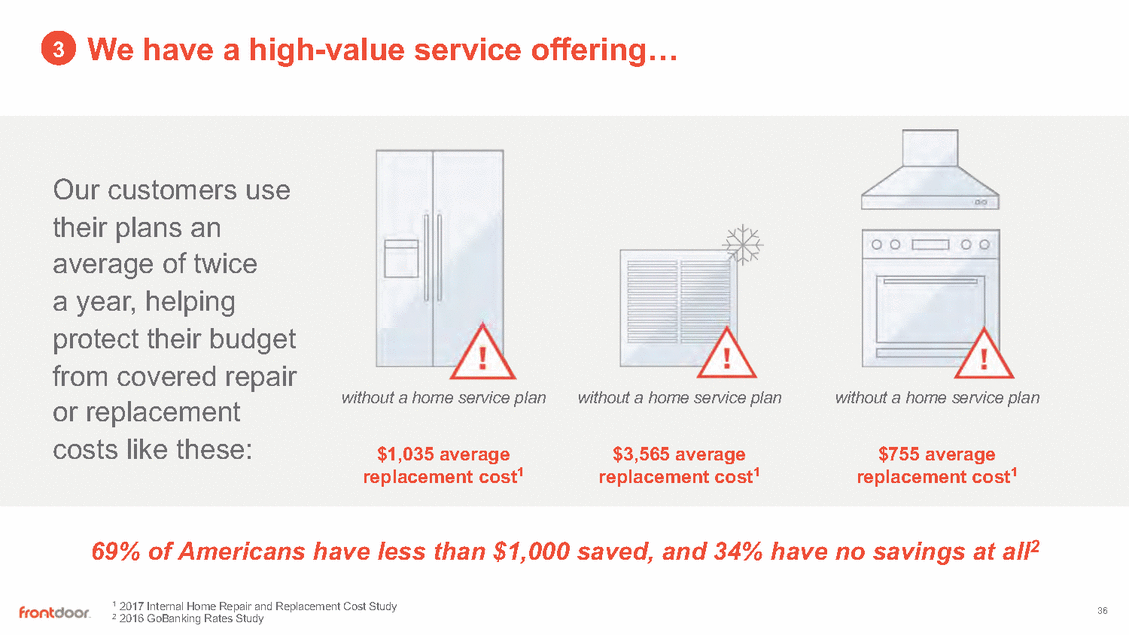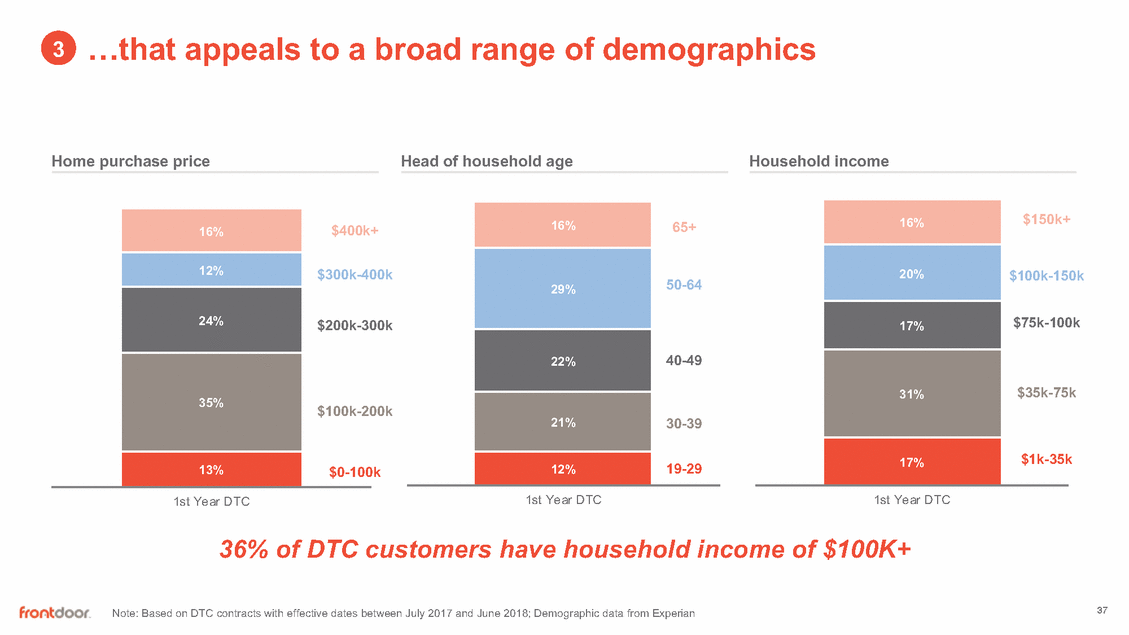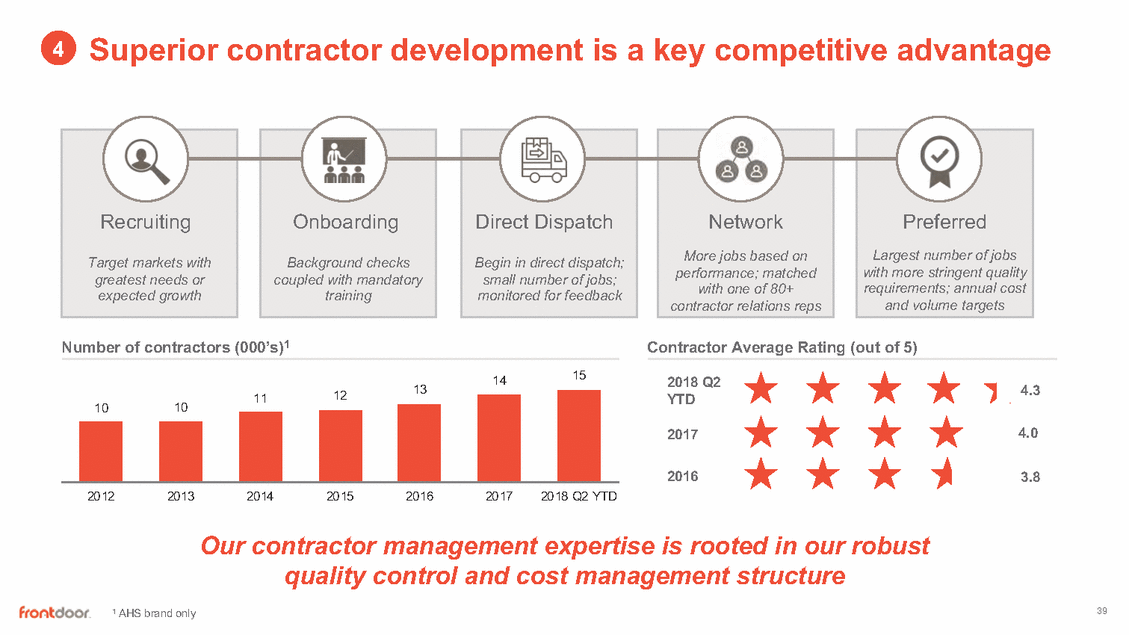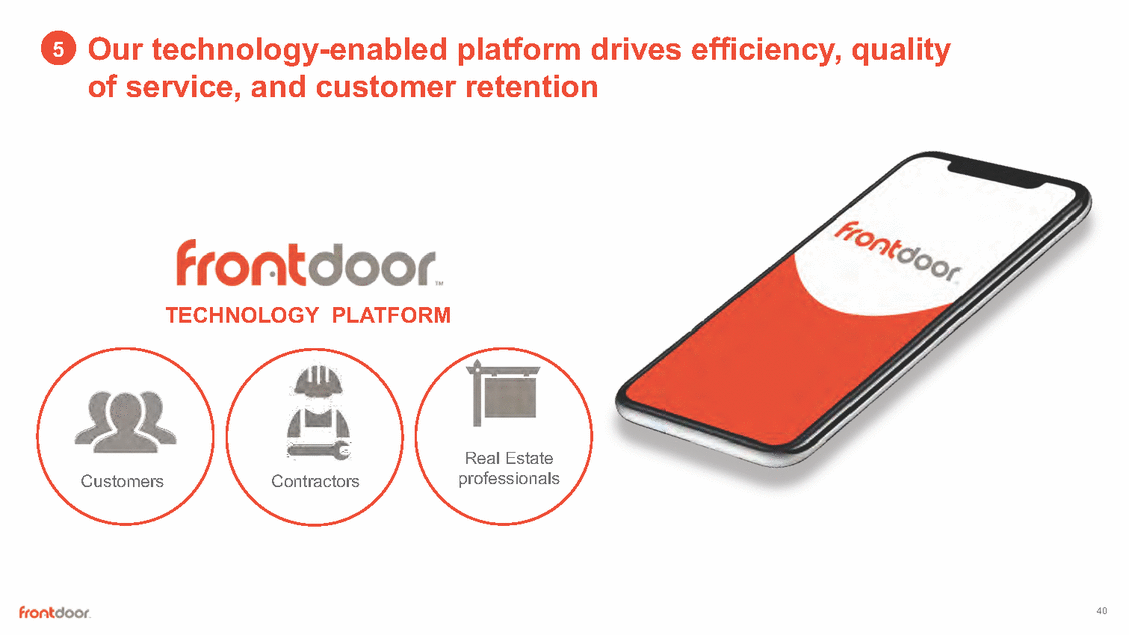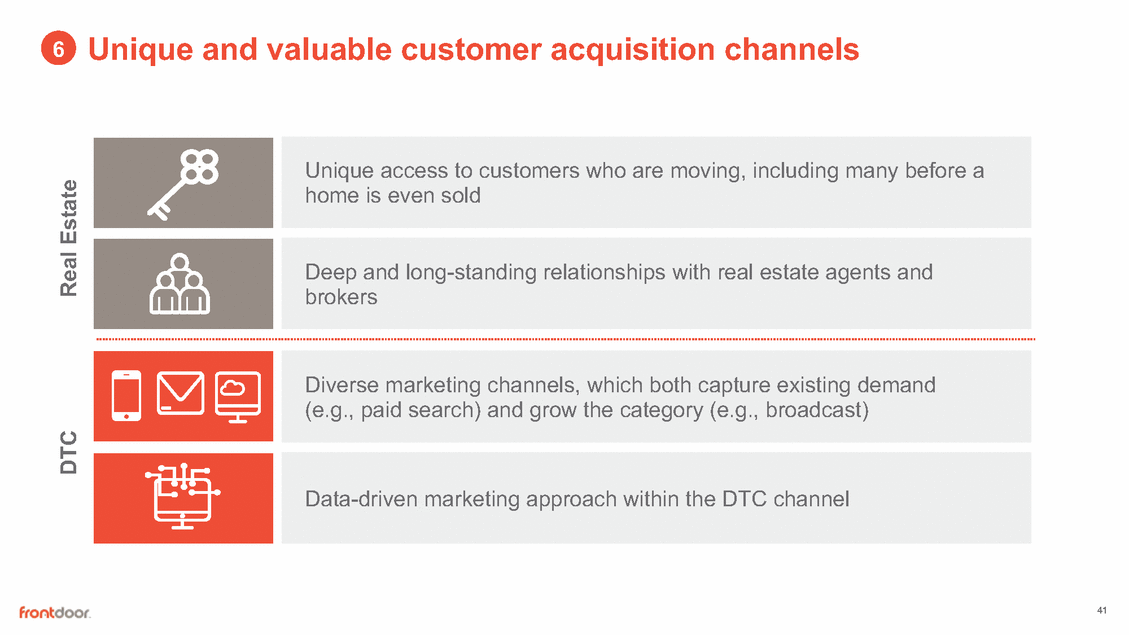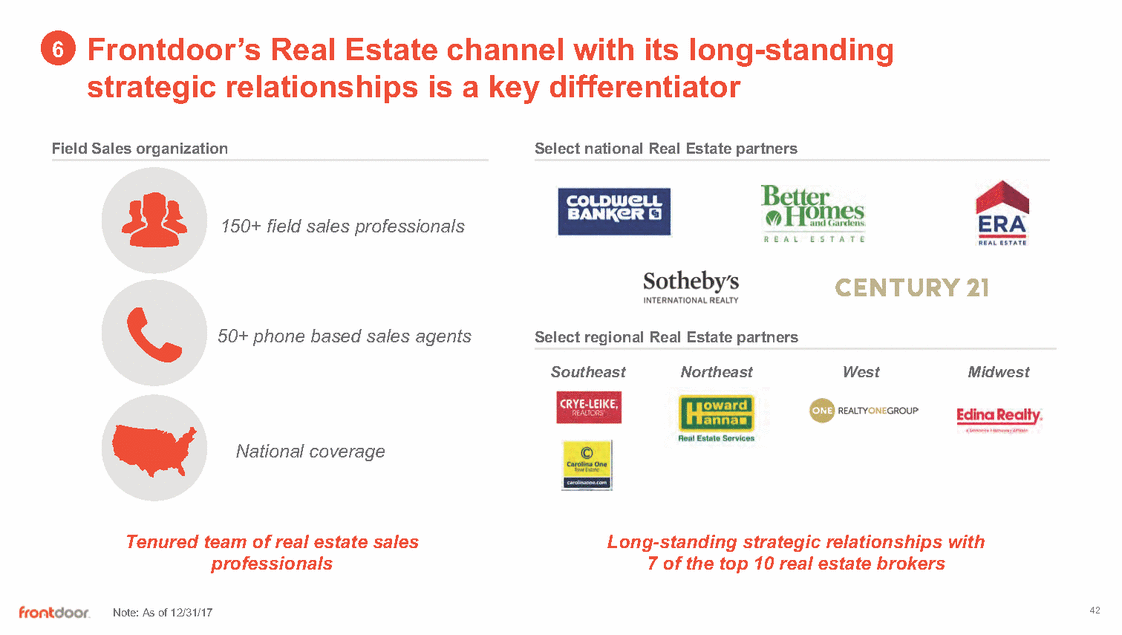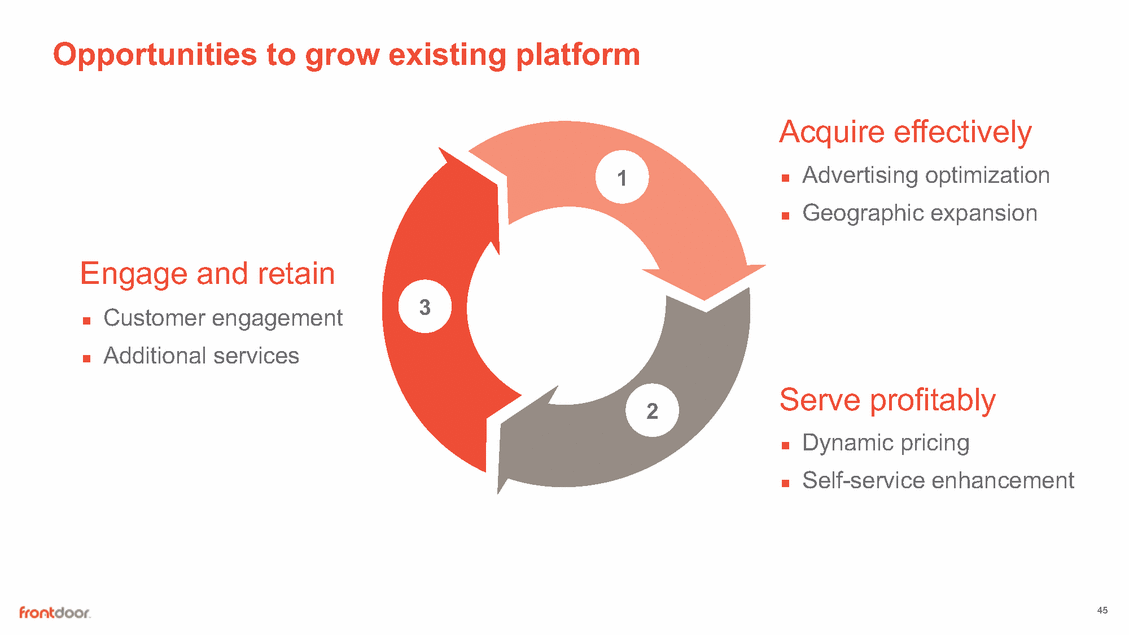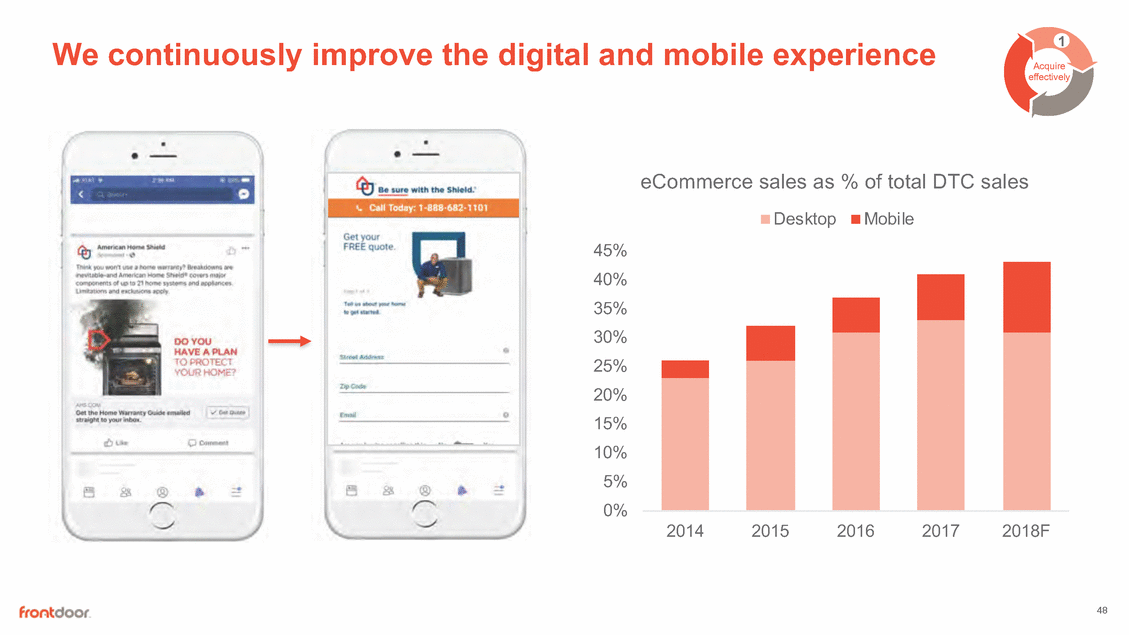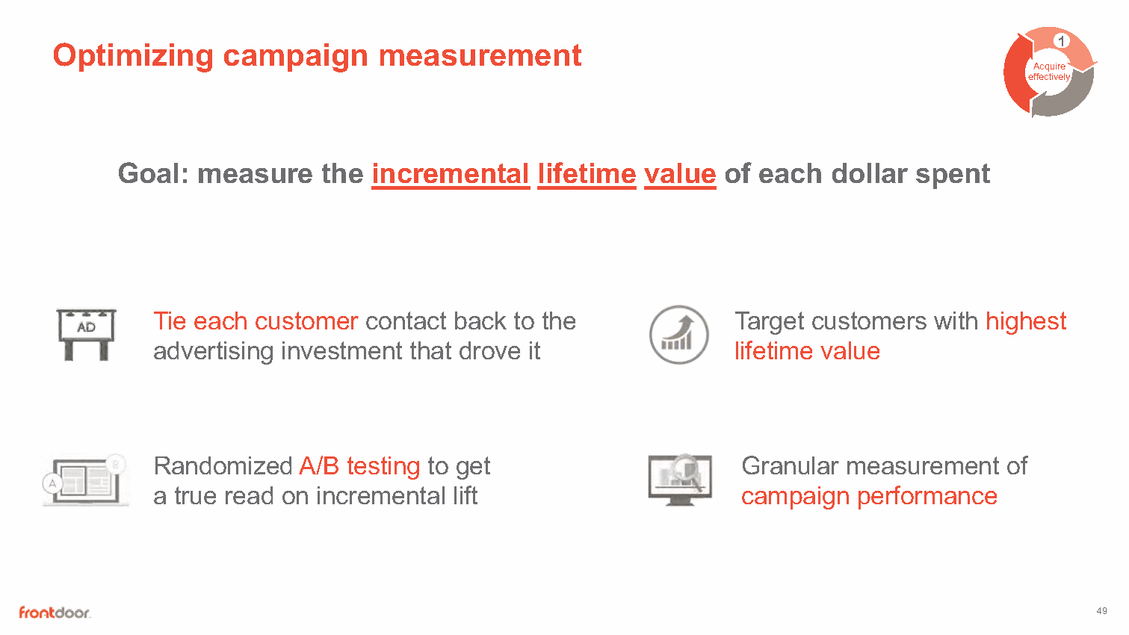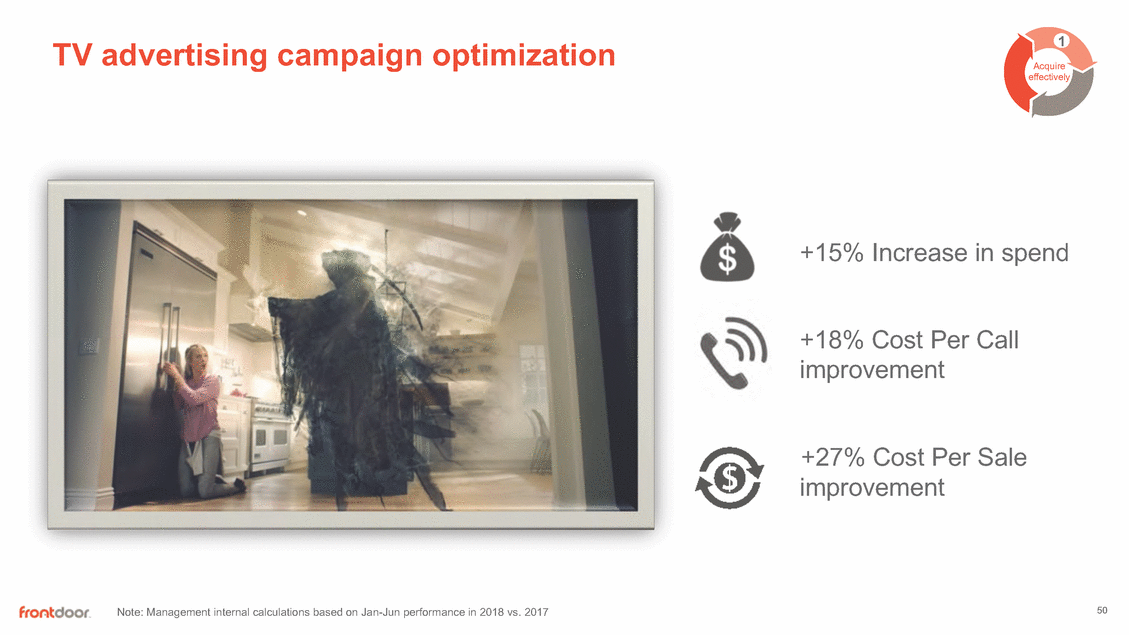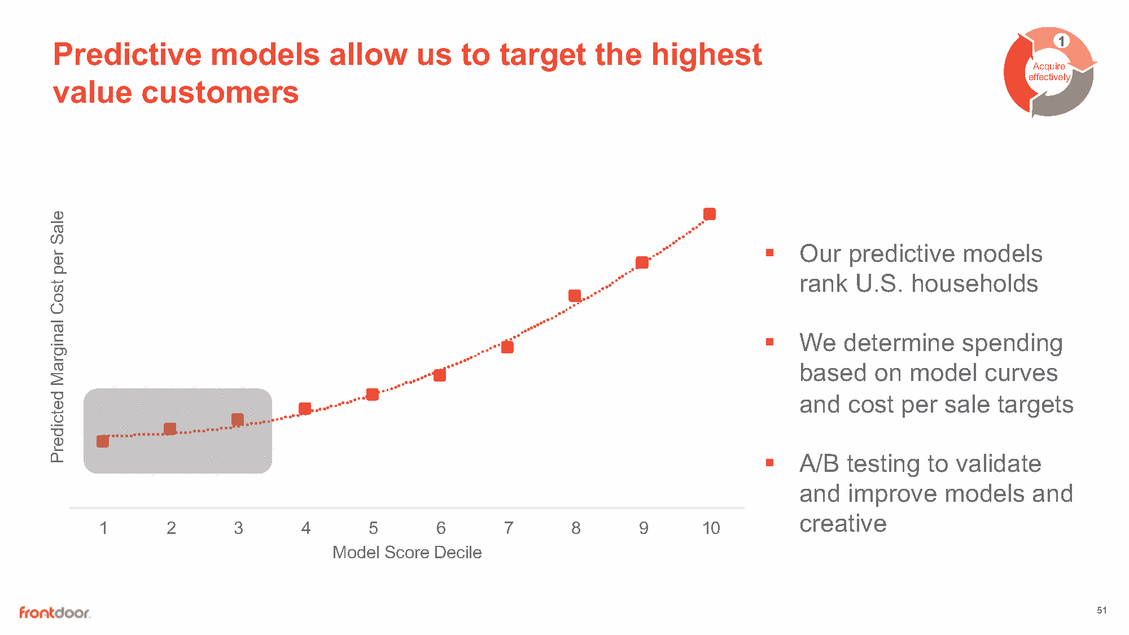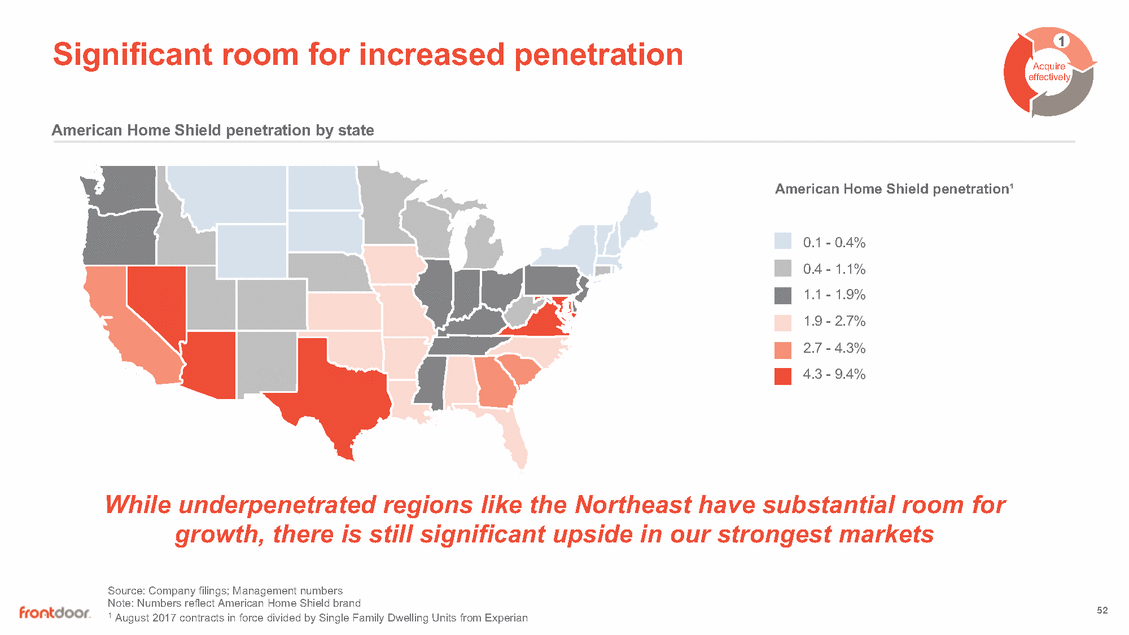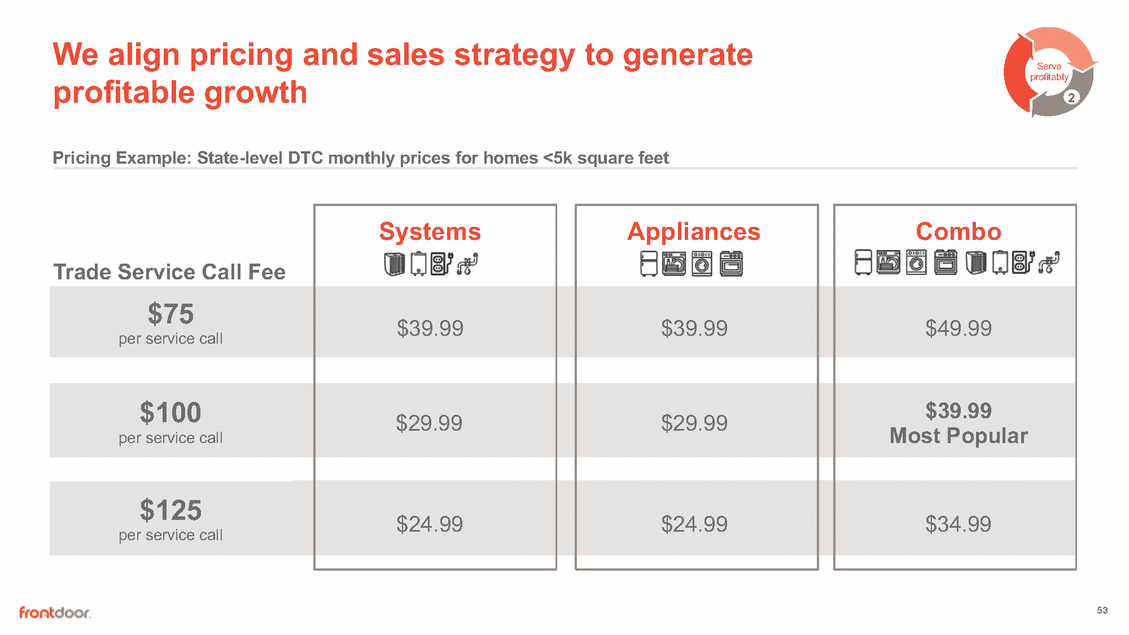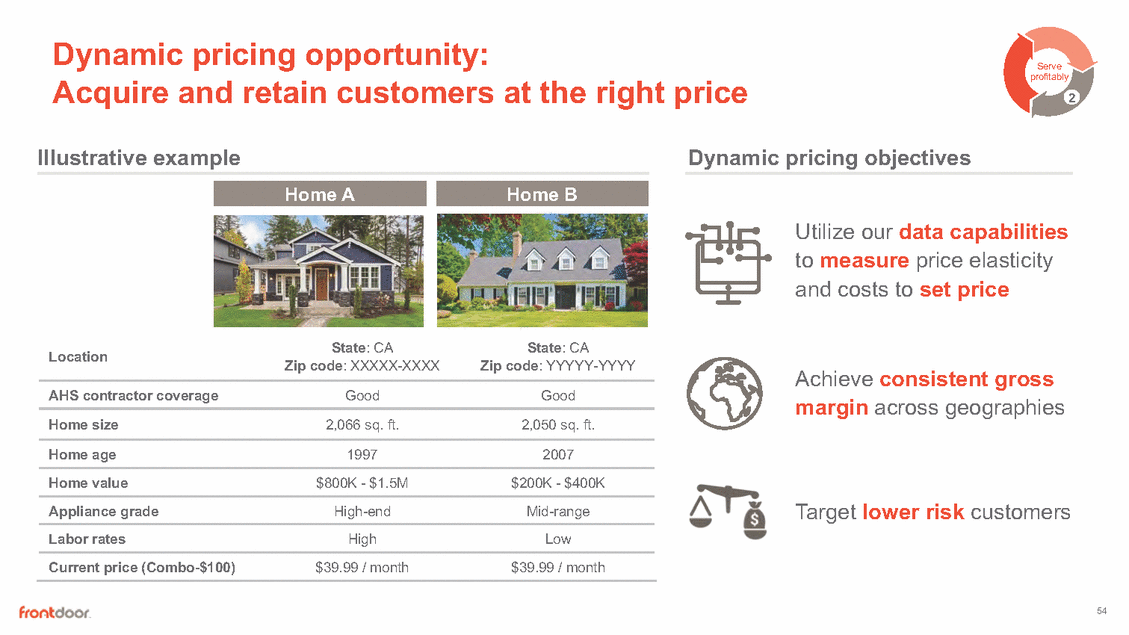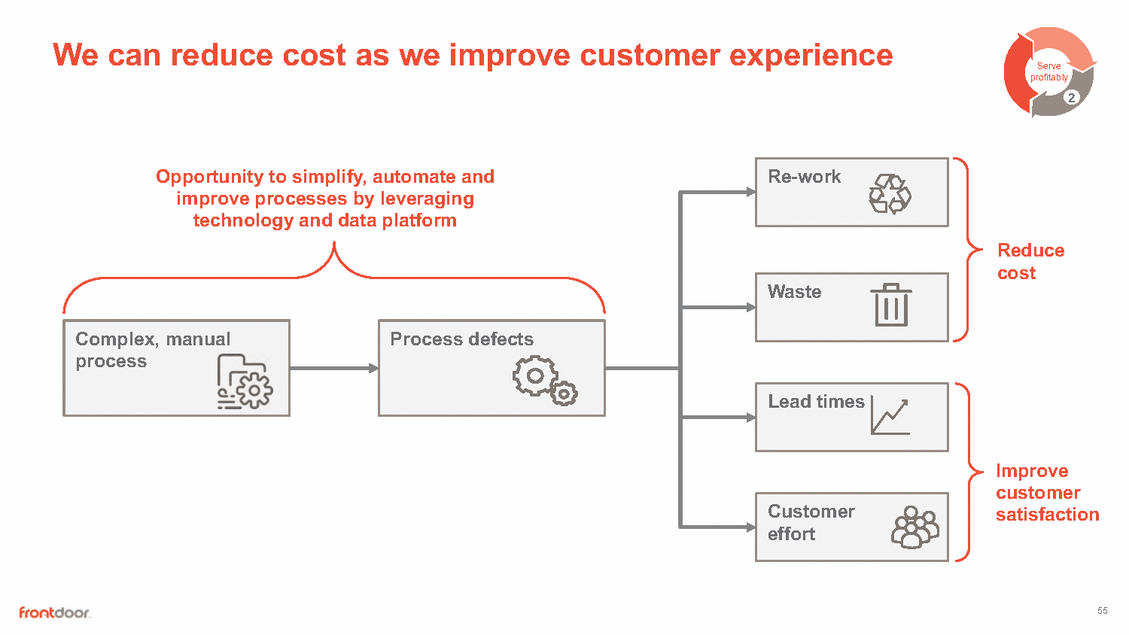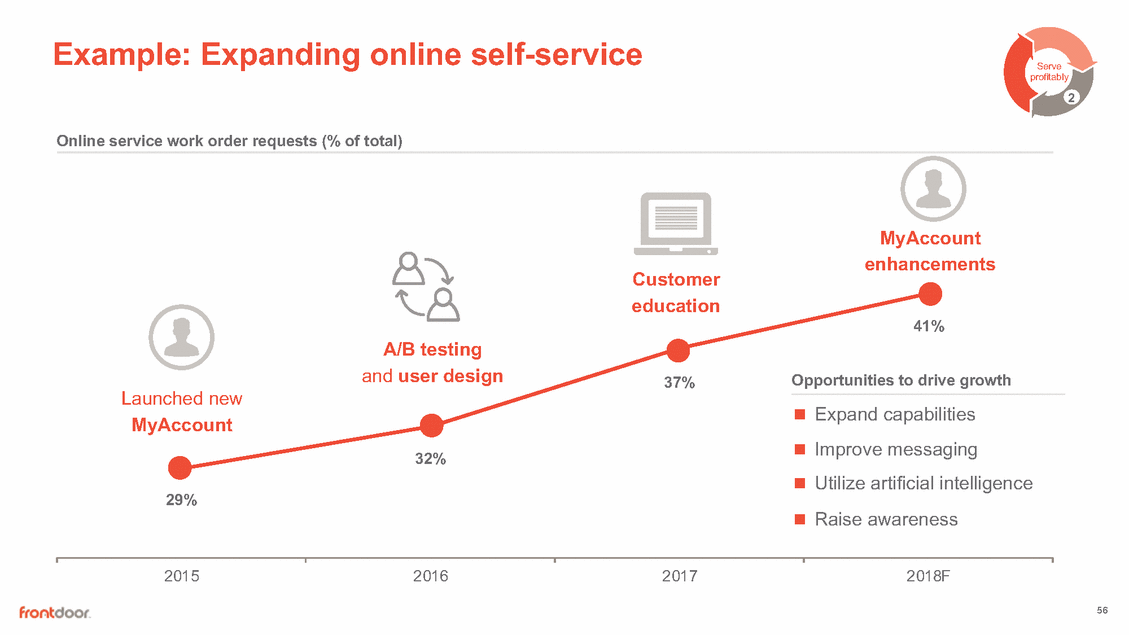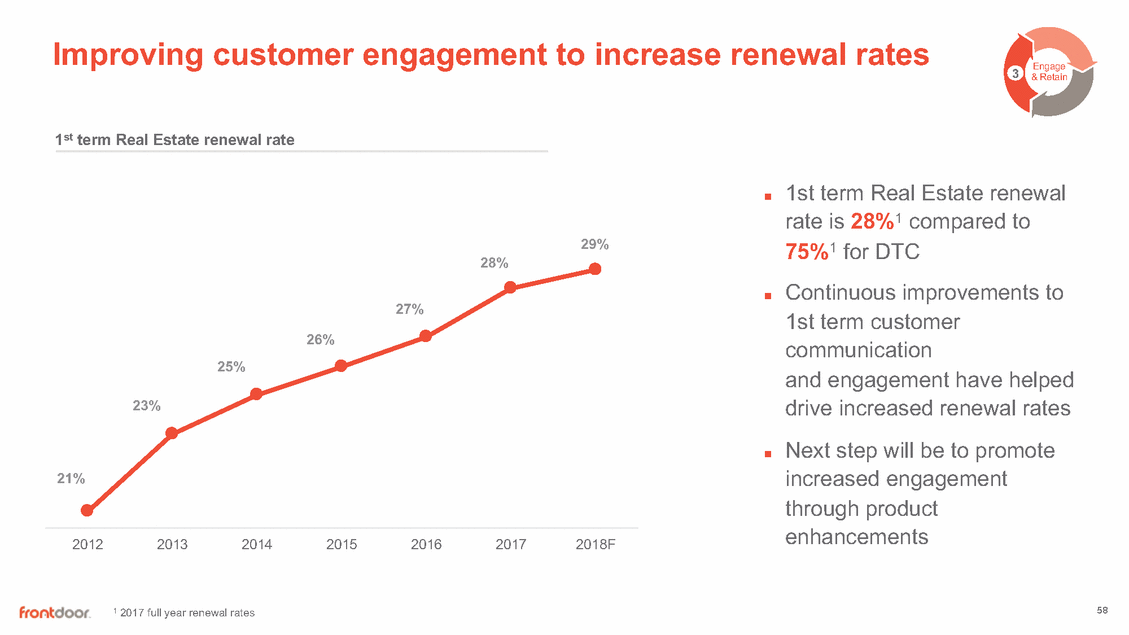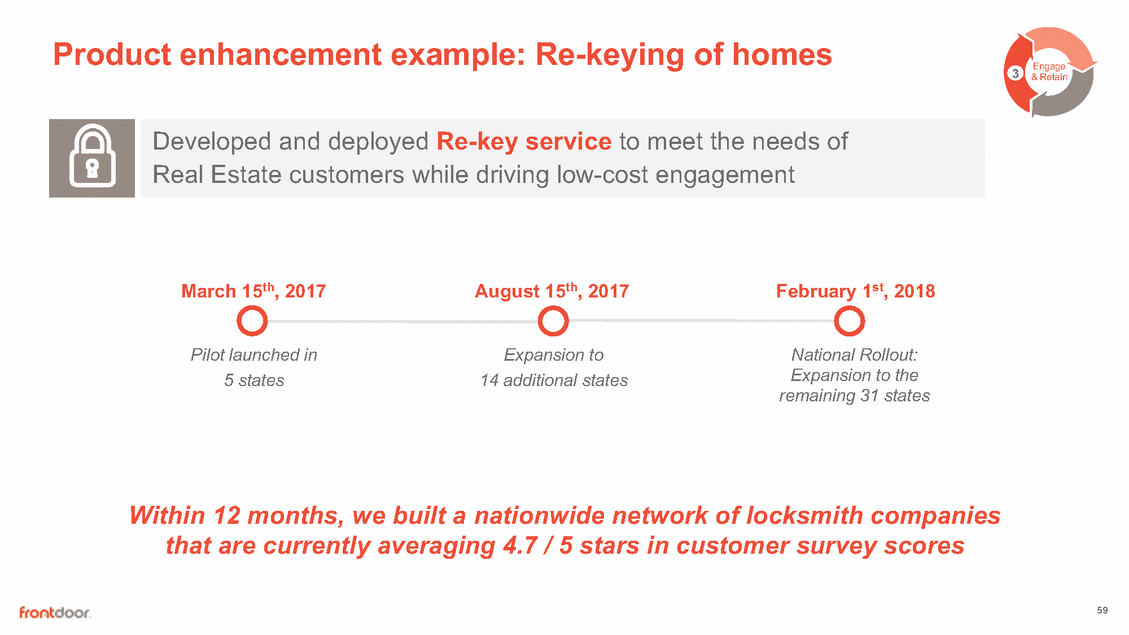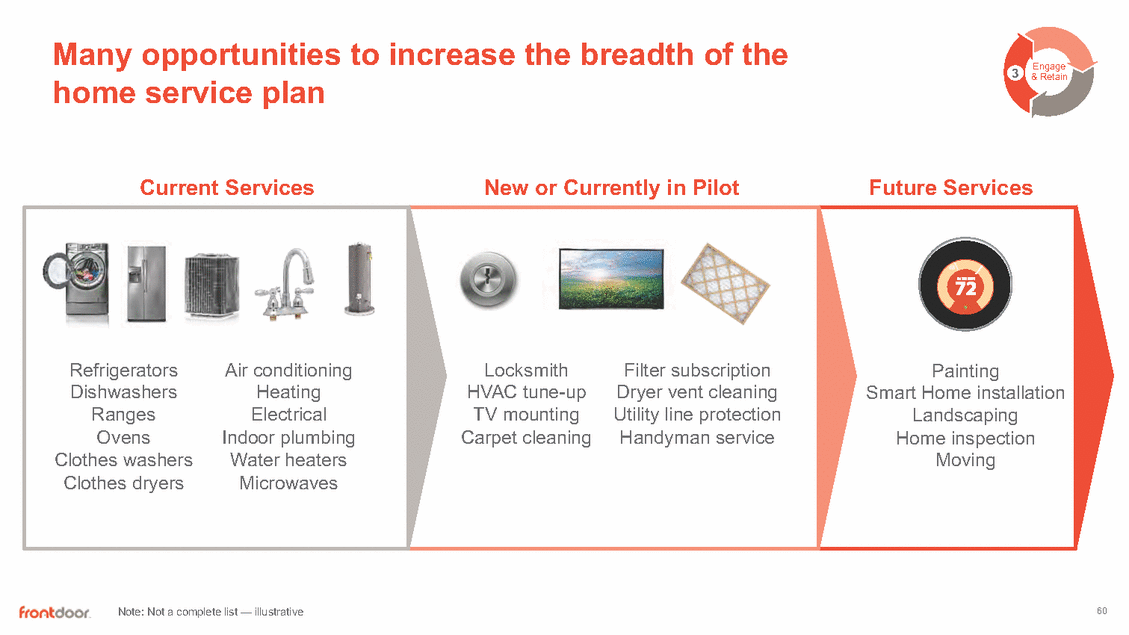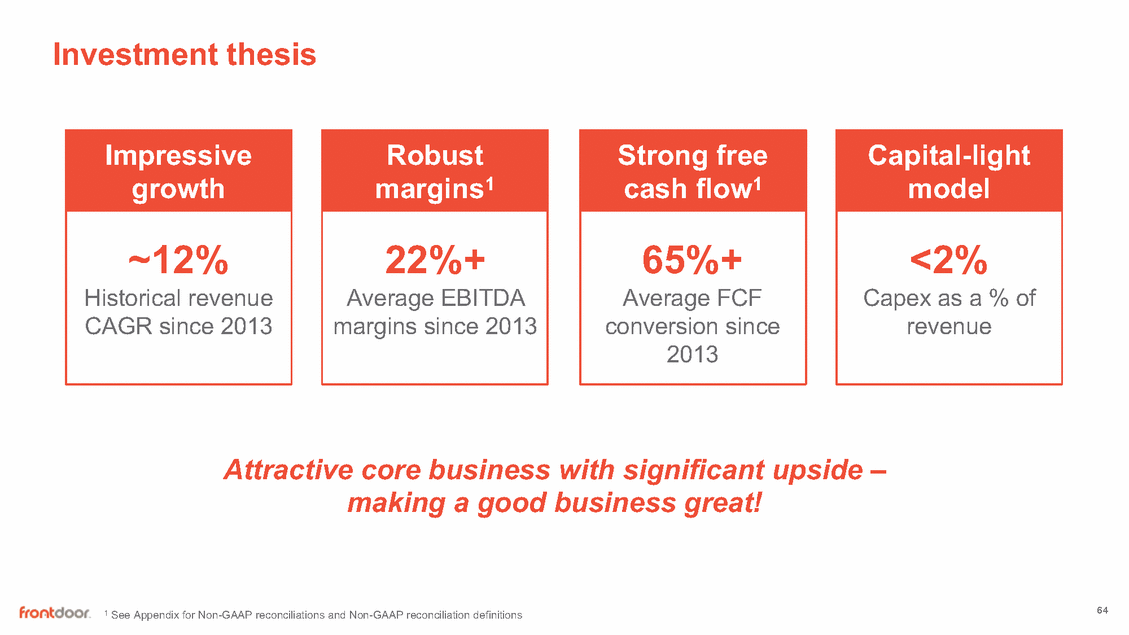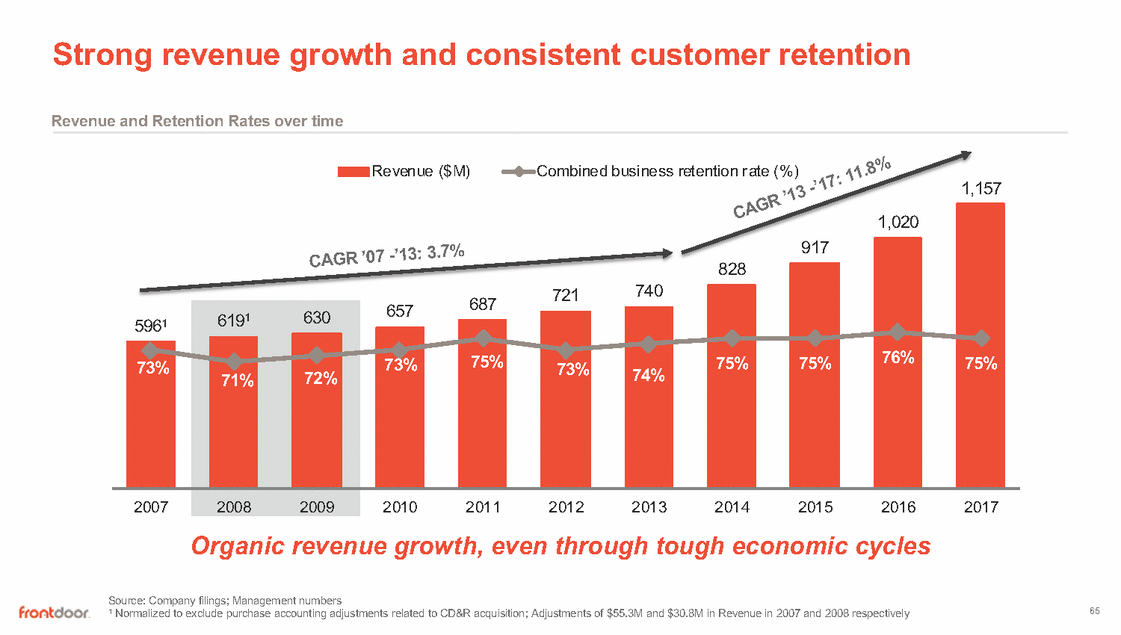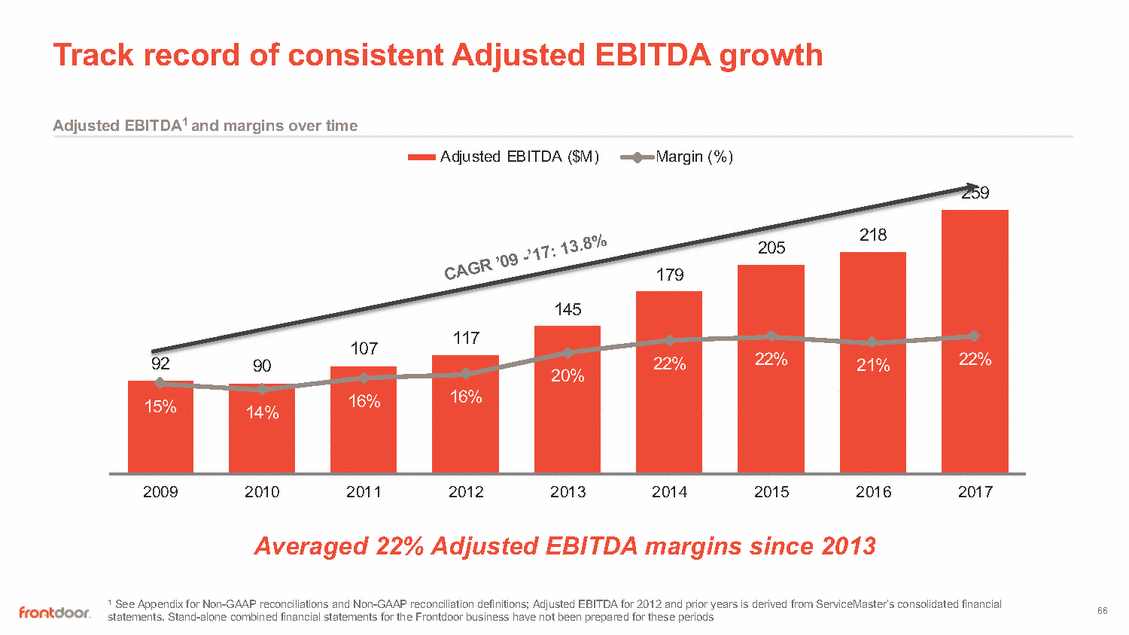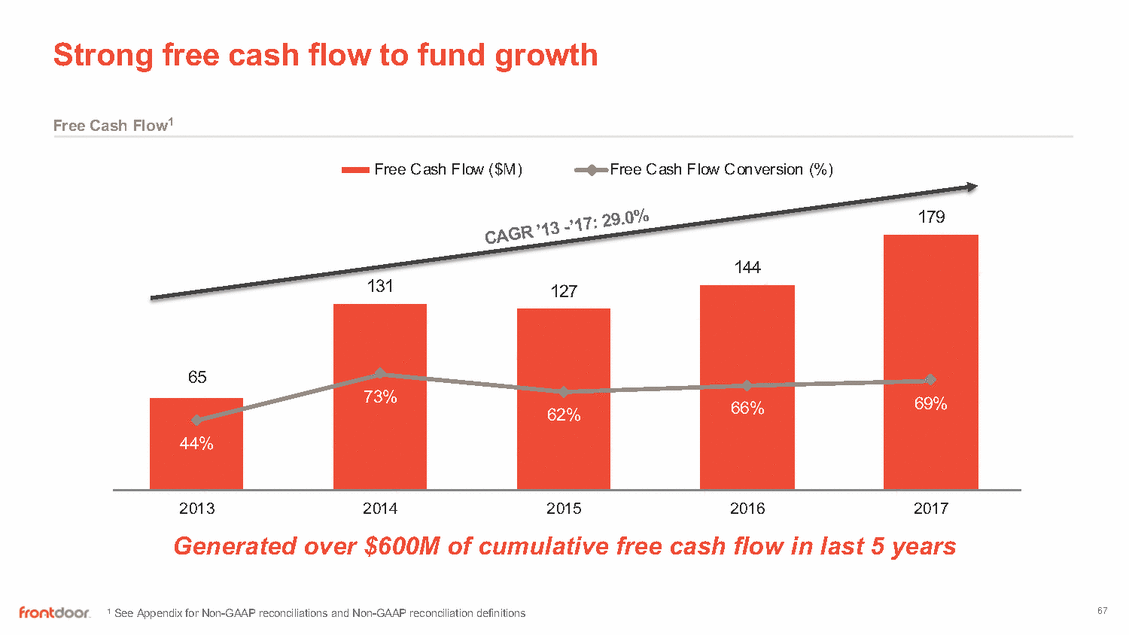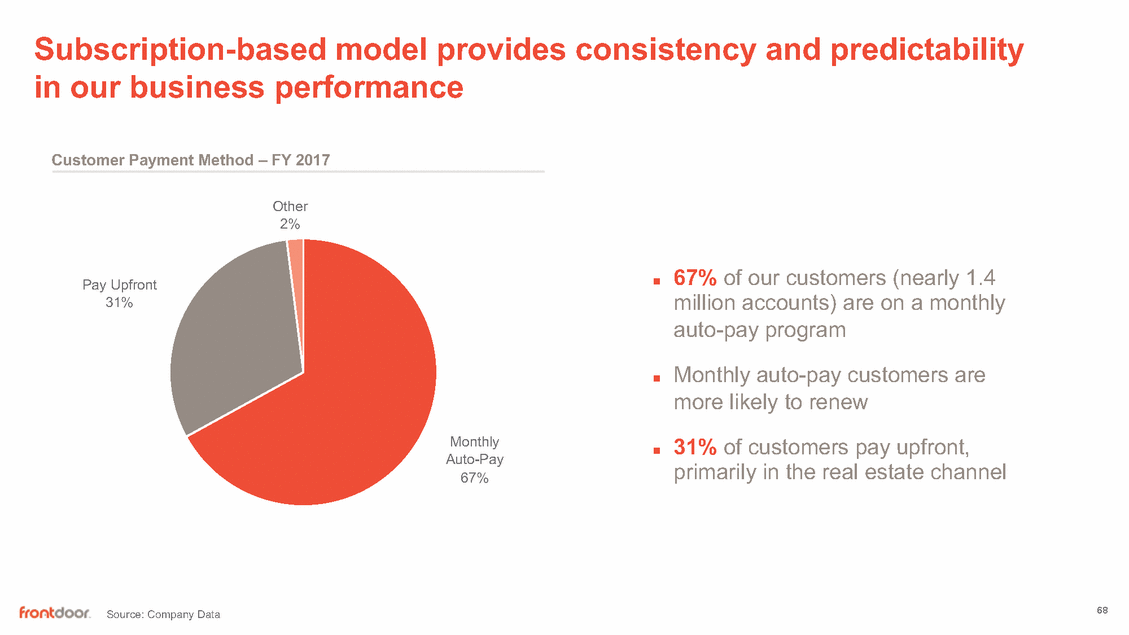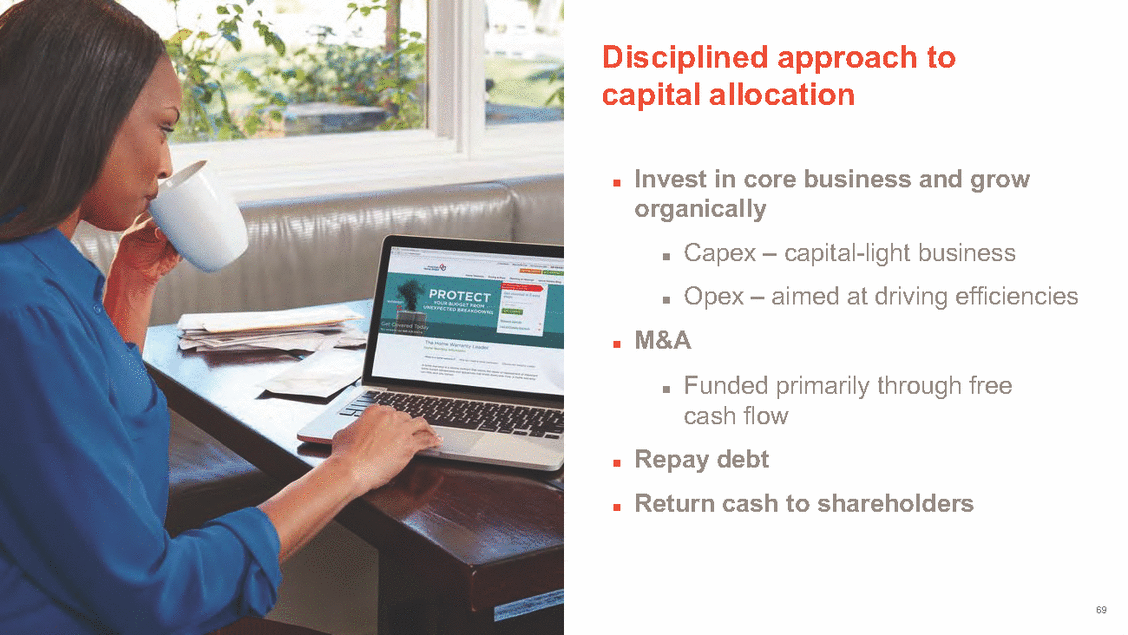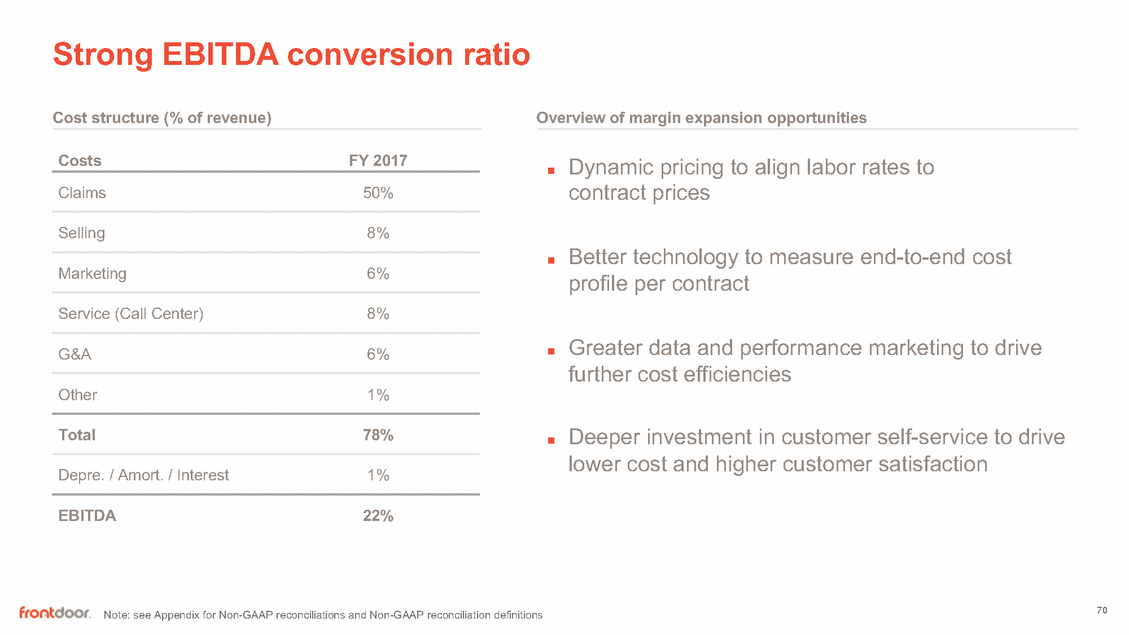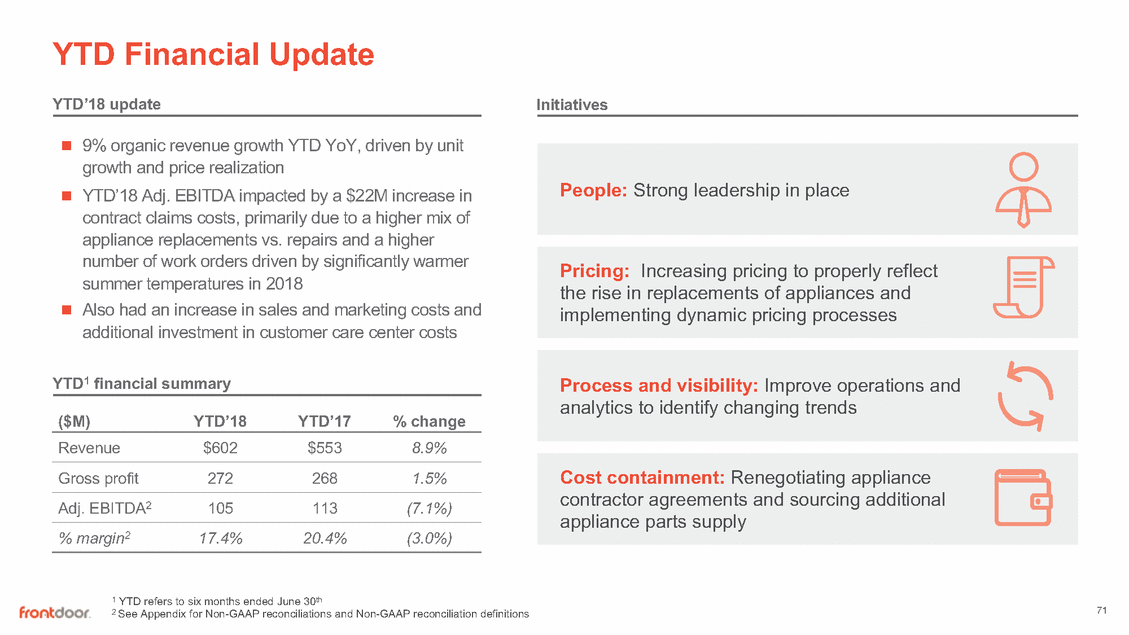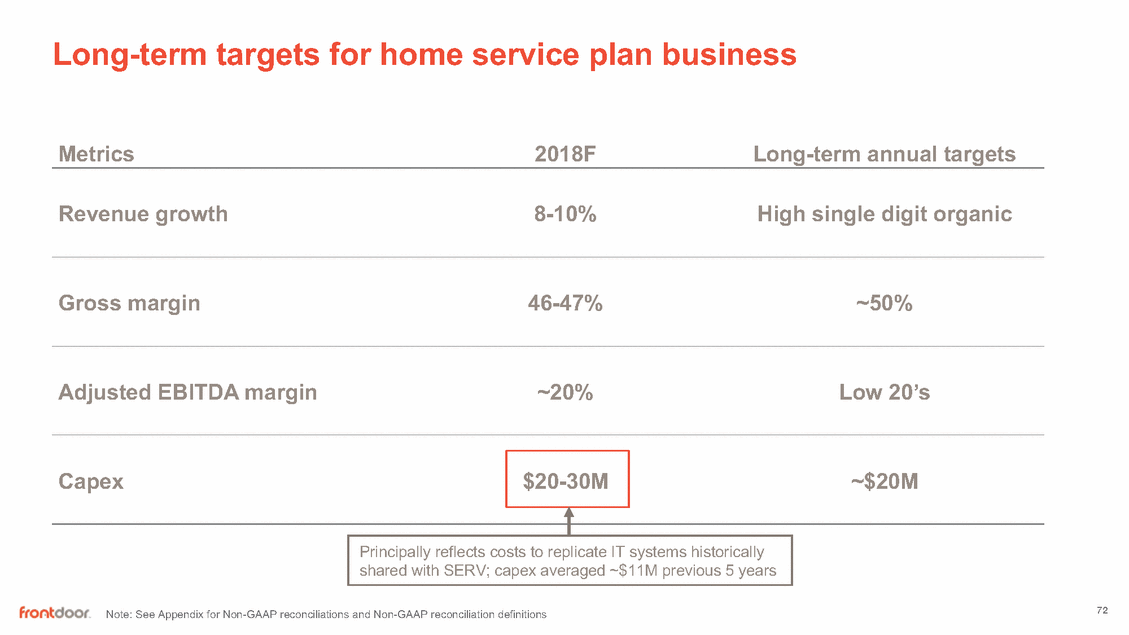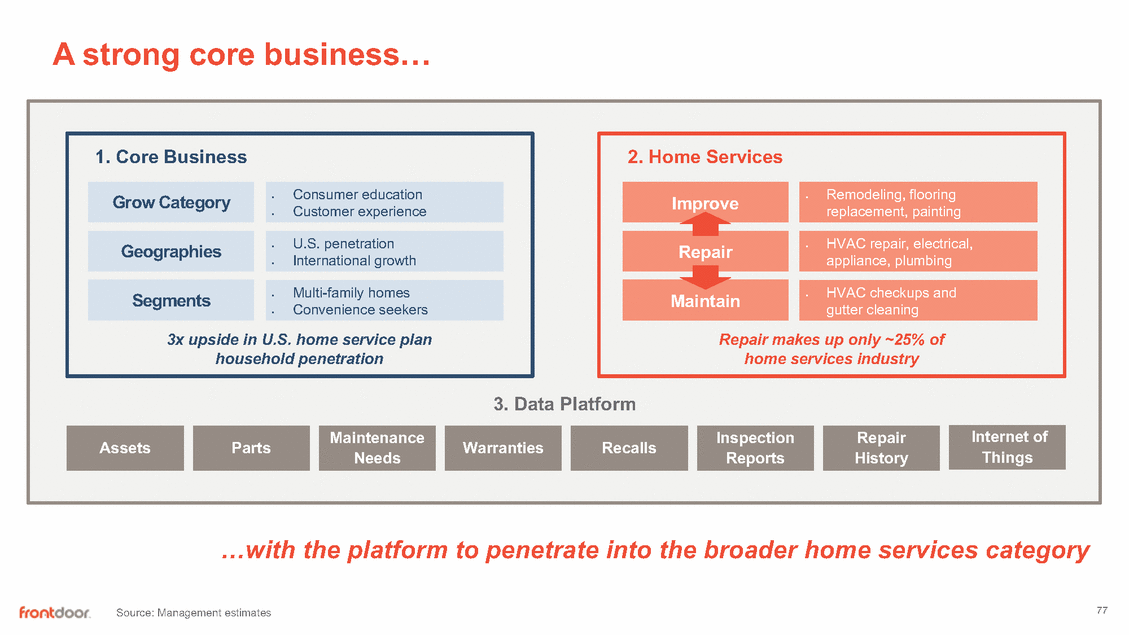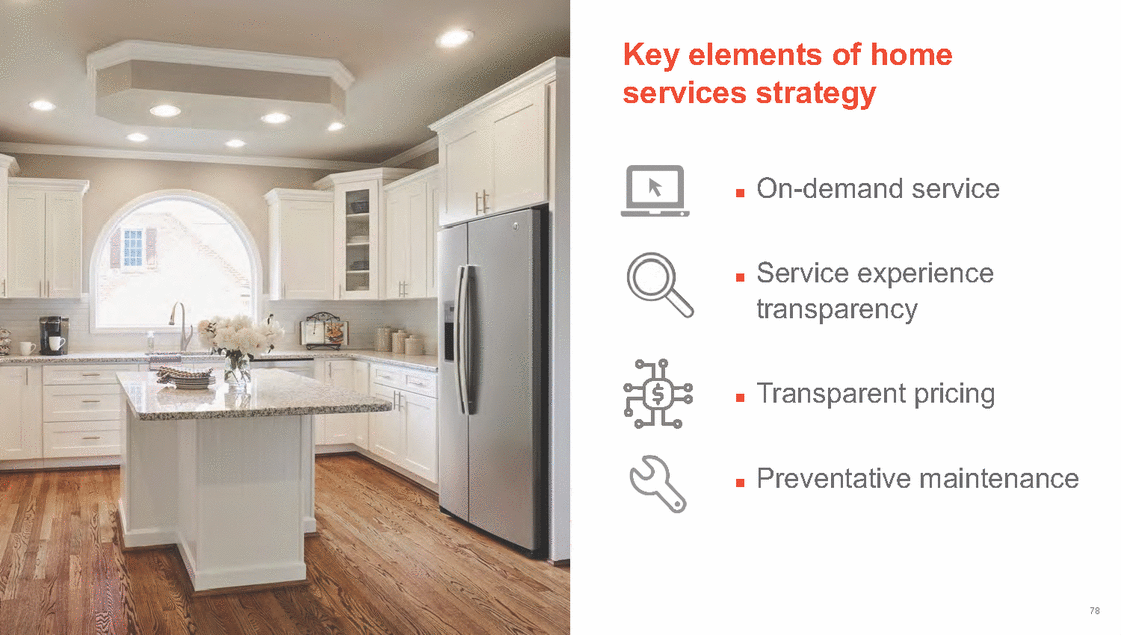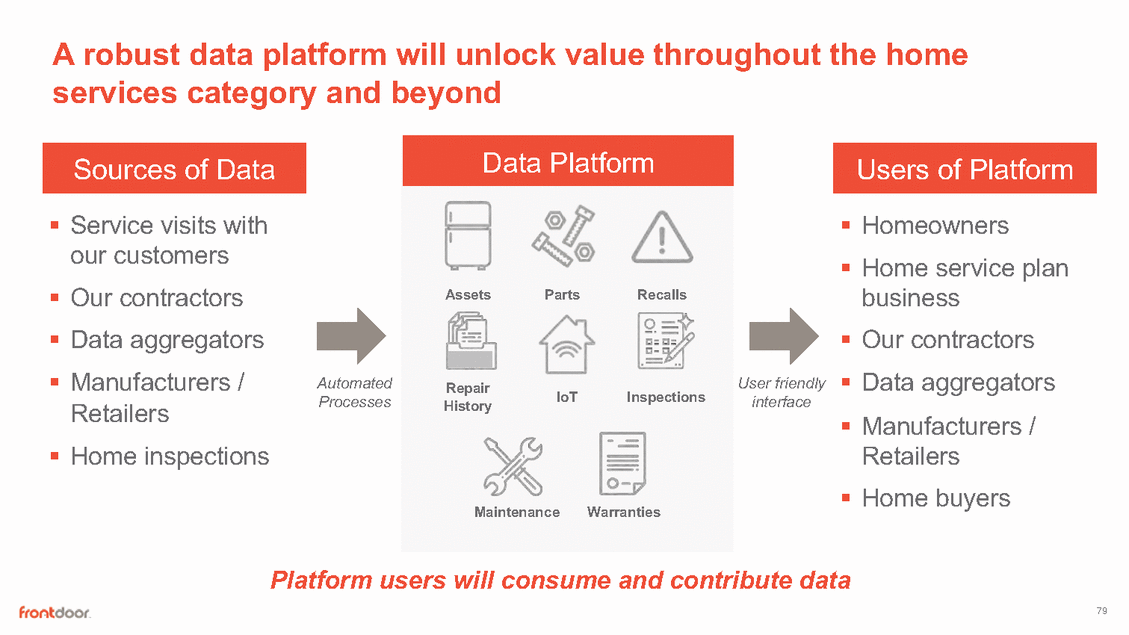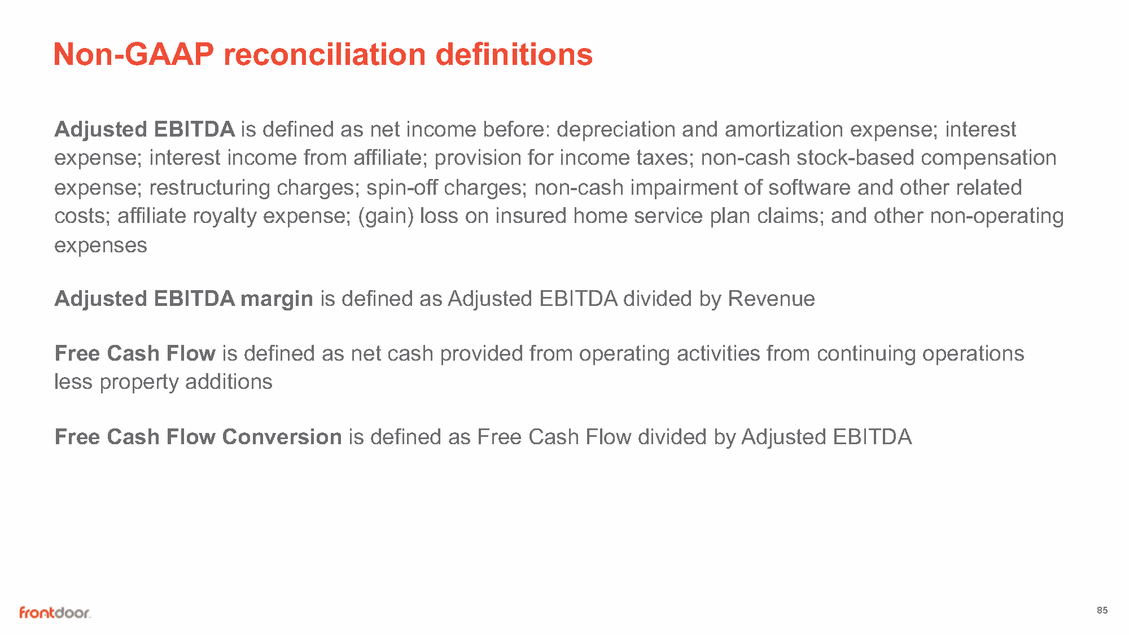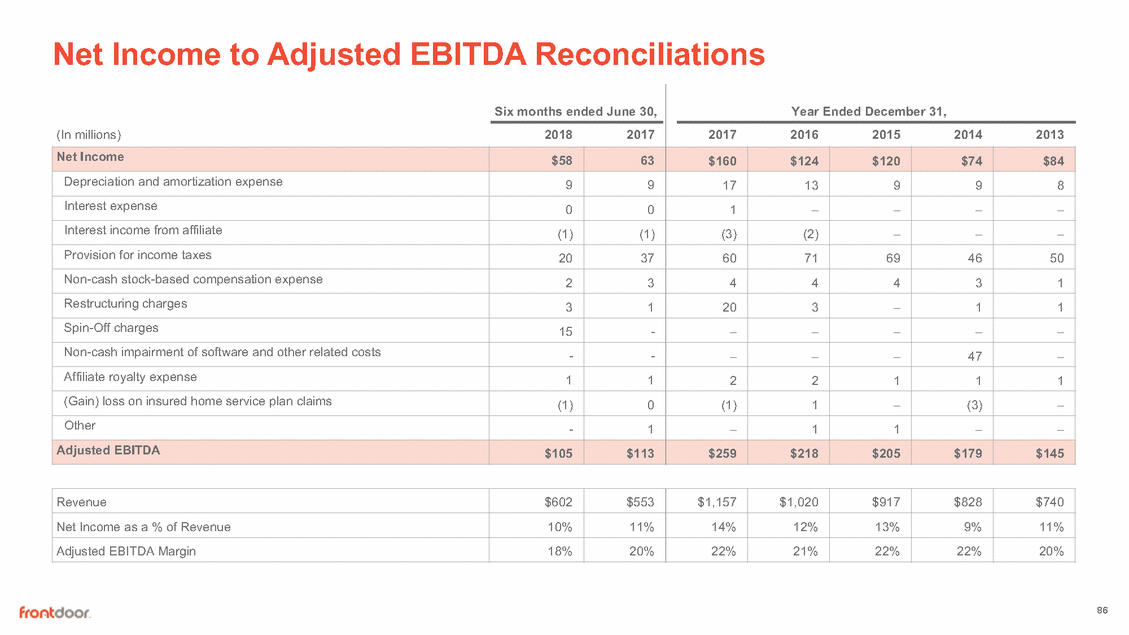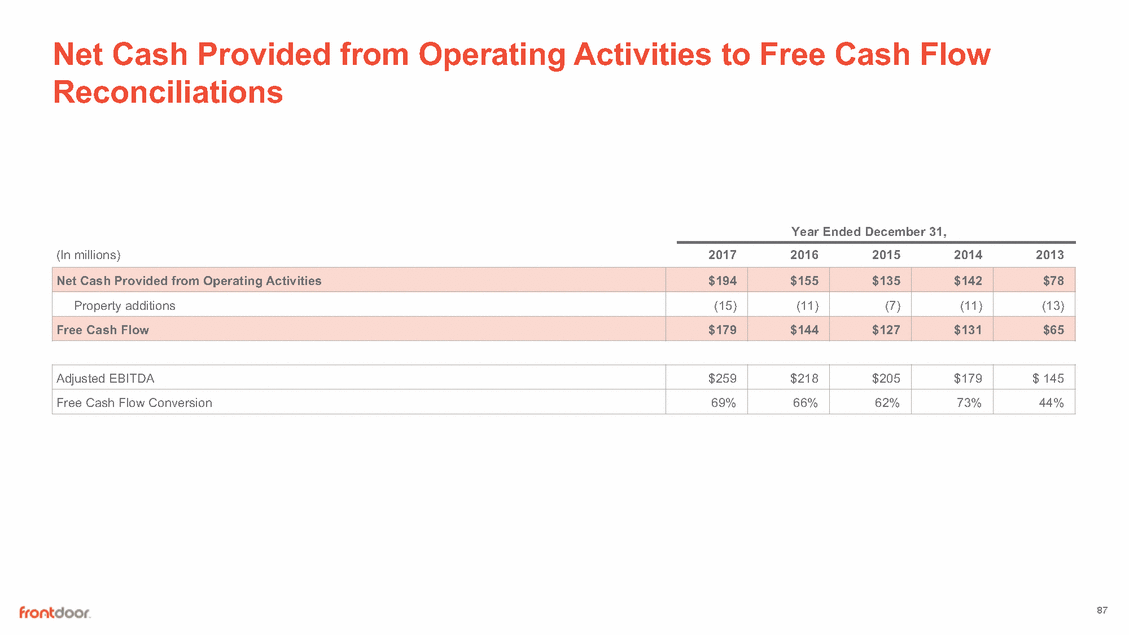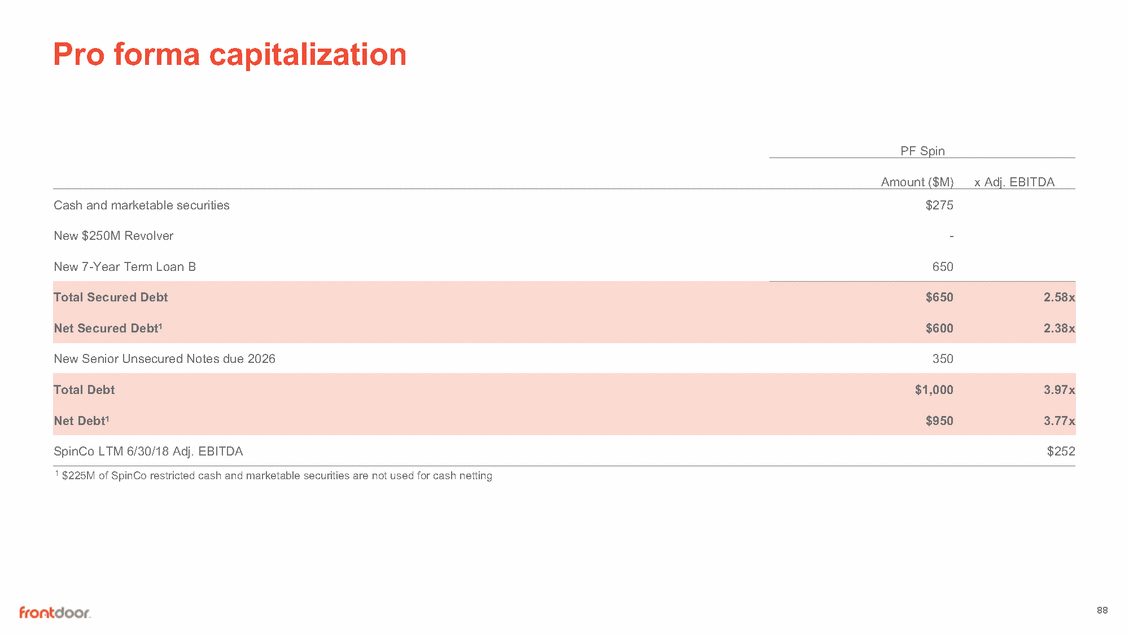Forward Looking Statements Information Regarding Forward-Looking Statements This presentation contains forward-looking statements and cautionary statements, including 2018 revenue growth, Adjusted EBITDA margins and capital expenditures, as well as statements with respect to the potential separation of frontdoor, inc. (“Frontdoor” or the “Company”) from ServiceMaster Global Holdings, Inc. (“ServiceMaster”) and the distribution of Frontdoor shares to ServiceMaster shareholders. Forward-looking statements can be identified by the use of forward-looking terms such as “believes,” “expects,” “may,” “will,” “shall,” “should,” “would,” “could,” “seeks,” “aims,” “projects,” “is optimistic,” “intends,” “plans,” “estimates,” “anticipates” or other comparable terms. Forward-looking statements are subject to known and unknown risks and uncertainties, many of which may be beyond our control, including, without limitation, the risks and uncertainties discussed in the “Risk Factors”, “Cautionary Statement Concerning Forward-Looking Statements” and “Information Regarding Forward-Looking Statements” sections in the Company’s and ServiceMaster’s reports filed with the U.S. Securities and Exchange Commission. Such risks, uncertainties and changes in circumstances include, but are not limited to: uncertainties as to the timing of the spin-off or whether it will be completed at all, the results and impact of the announcement of the proposed spin-off, the failure to satisfy any conditions to complete the spin-off, the expected tax treatment of the spin-off, the increased demands on management to prepare for and accomplish the spin-off, the incurrence of significant transaction costs, the impact of the spin-off on the business of Frontdoor, and the failure to achieve anticipated benefits of the spin-off. We caution you that forward-looking statements are not guarantees of future performance or outcomes and that actual performance and outcomes, including, without limitation, our actual results of operations, financial condition and liquidity, and the development of the market segments in which we operate, may differ materially from those made in or suggested by the forward-looking statements contained in this presentation. Additional factors that could cause actual results and outcomes to differ from those reflected in forward-looking statements include, without limitation, lawsuits, enforcement actions and other claims by third parties or governmental authorities; the effects of our substantial indebtedness; changes in interest rates, because a significant portion of our indebtedness bears interest at variable rates; weakening general economic conditions; weather conditions and seasonality; the success of our business strategies, and costs associated with restructuring initiatives. The Company assumes no obligation to update the information contained herein, which speaks only as of the date hereof. For a discussion of some of the important factors that could cause the Company’s results to differ materially from those expressed in, or implied by, the forward-looking statements included in this presentation, investors should refer to the disclosure contained under the heading “Risk Factors” in our registration statement on Form 10. Non-GAAP Financial Measures This presentation contains certain non-GAAP financial measures. Non-GAAP measures should not be considered as an alternative to GAAP financial measures. Non-GAAP measures may not be calculated or comparable to similarly titled measures of other companies. See non-GAAP reconciliations in the Appendix to this presentation for a reconciliation of these measures to the most directly comparable GAAP financial measures. Adjusted EBITDA and free cash flow are not measurements of the Company’s financial performance under GAAP and should not be considered as an alternative to net income, net cash provided by operating activities from continuing operations or any other performance measures derived in accordance with GAAP. Management uses these non-GAAP financial measures to facilitate operating performance comparisons from period to period. We believe these non-GAAP financial measures are useful for investors, analysts and other interested parties as they facilitate company to company operating performance and cash flow comparisons, as applicable, by excluding potential differences caused by variations in capital structures, taxation, the age and book depreciation of facilities and equipment, restructuring initiatives and equity-based, long-term incentive plans. 2
